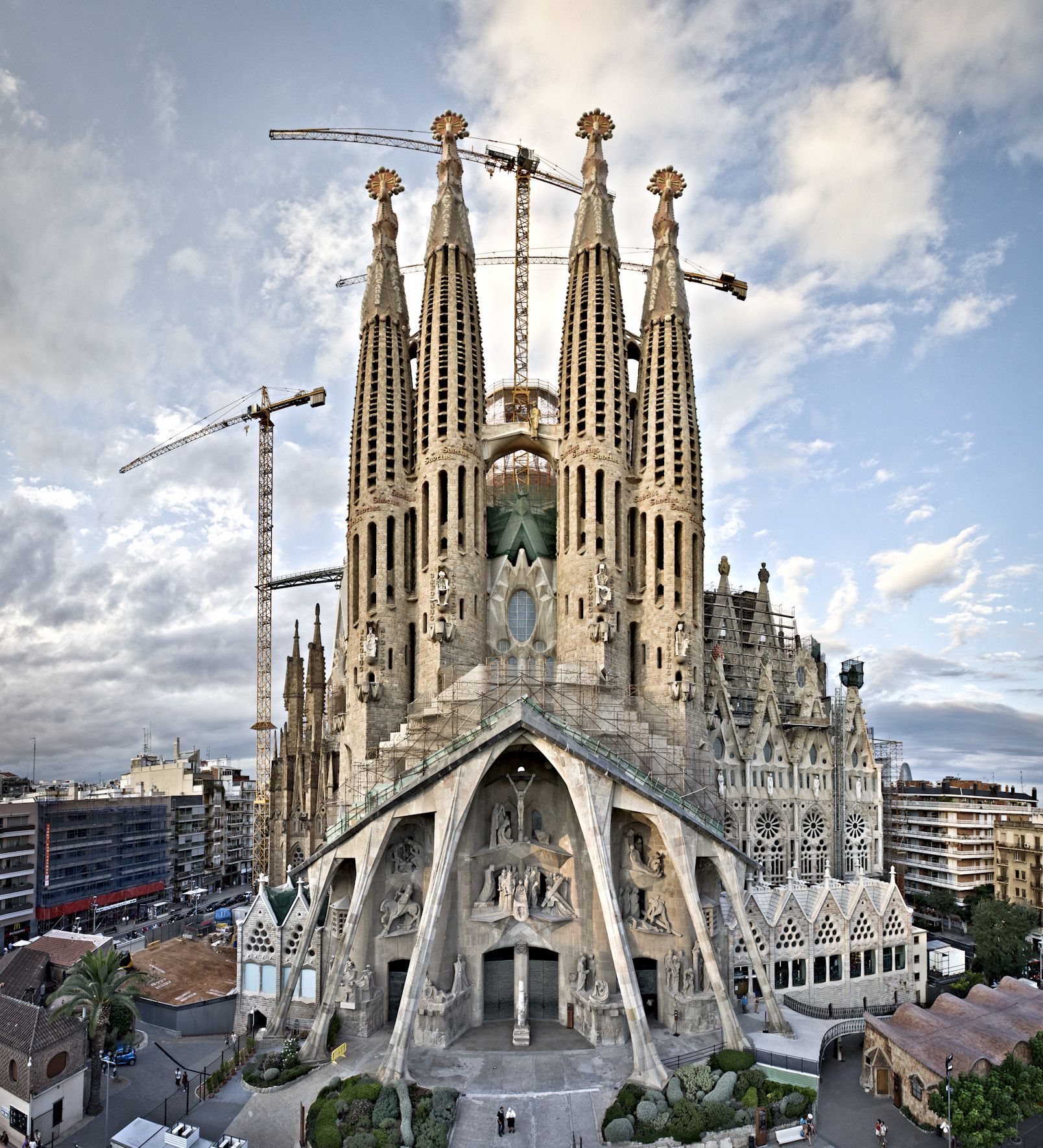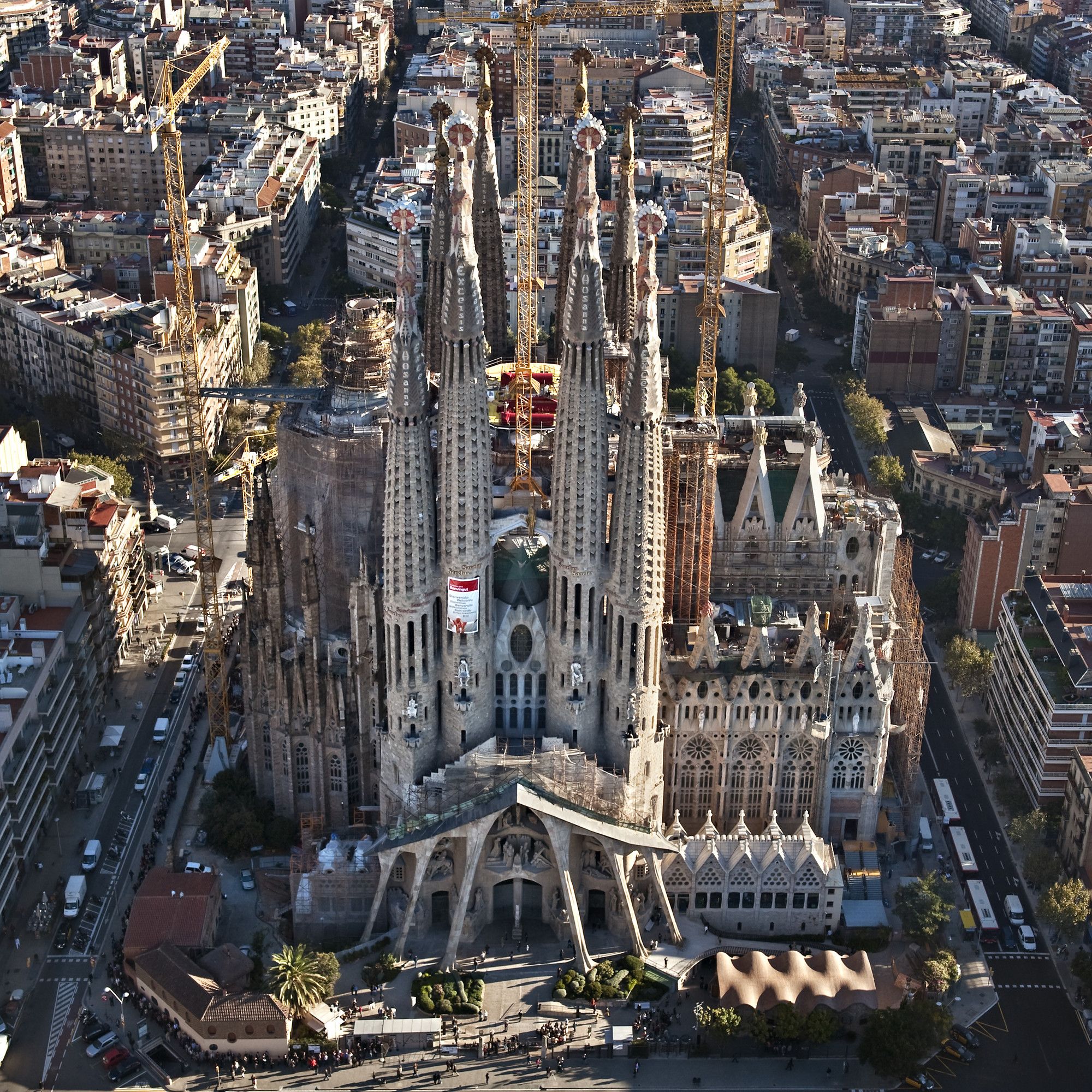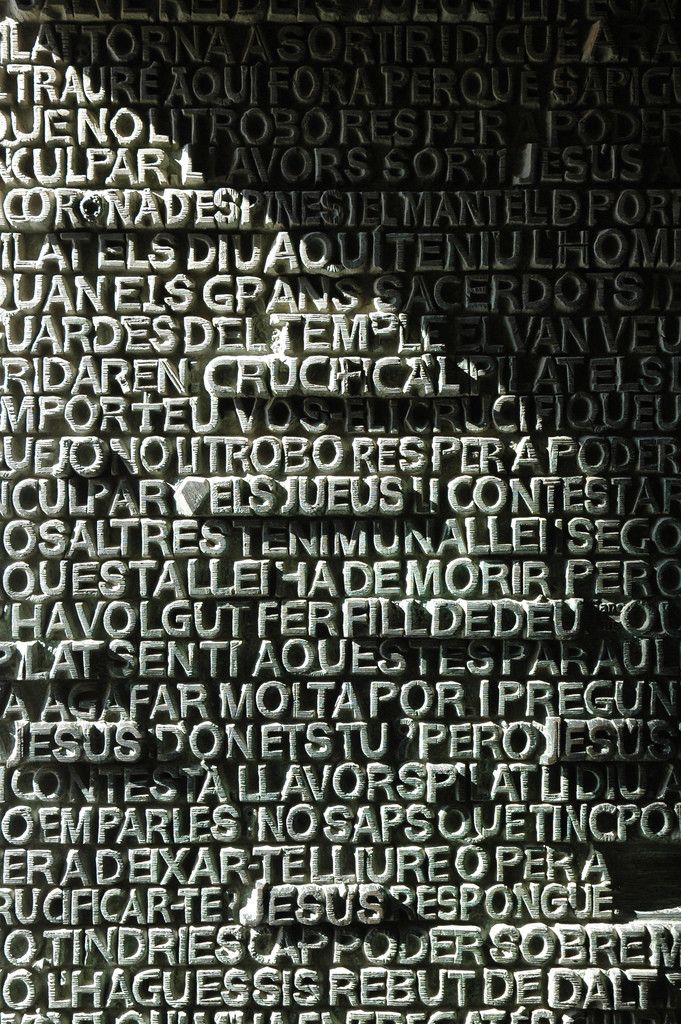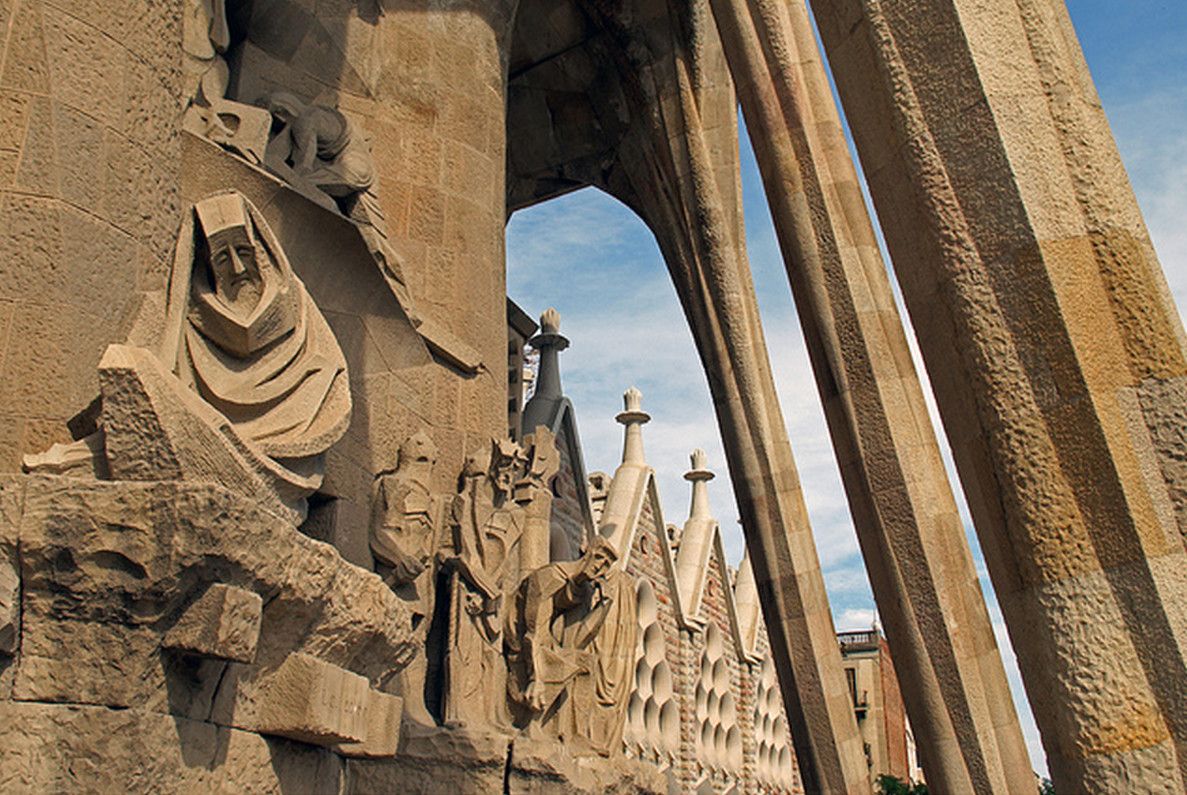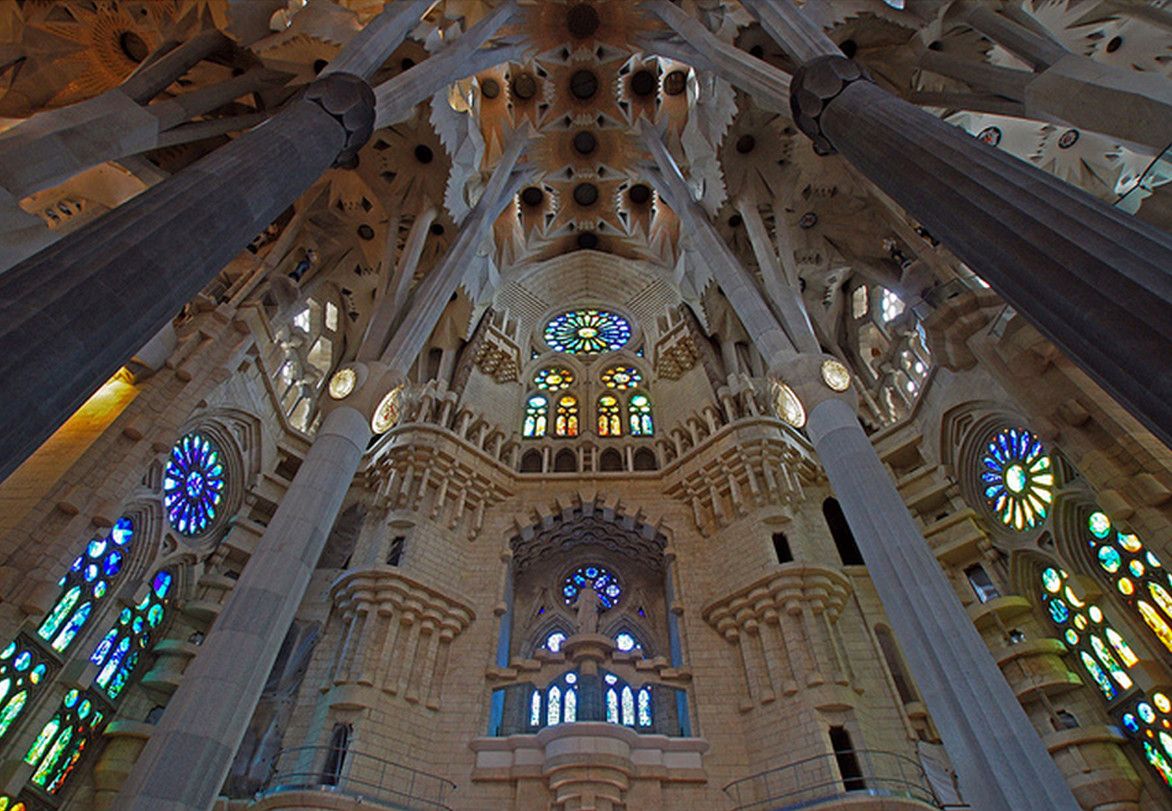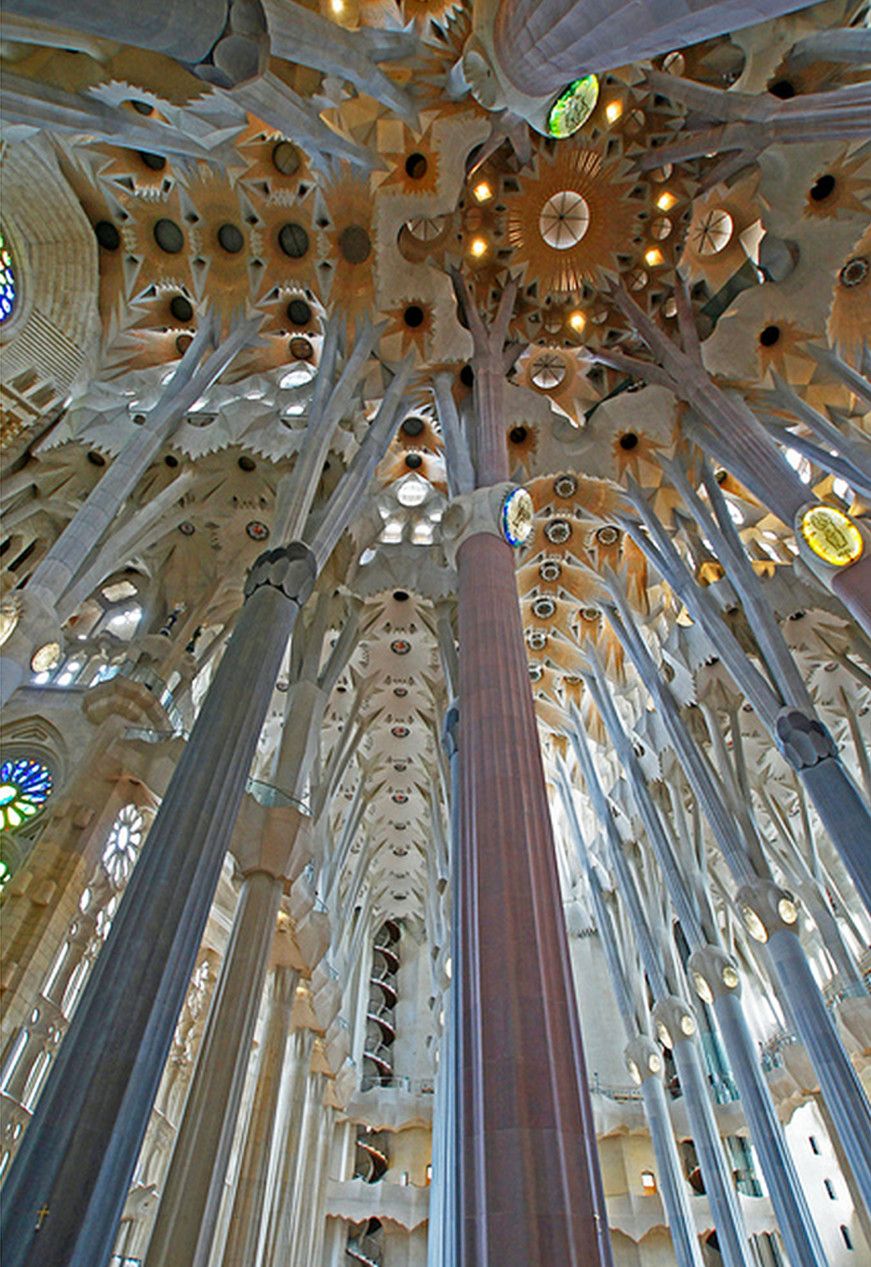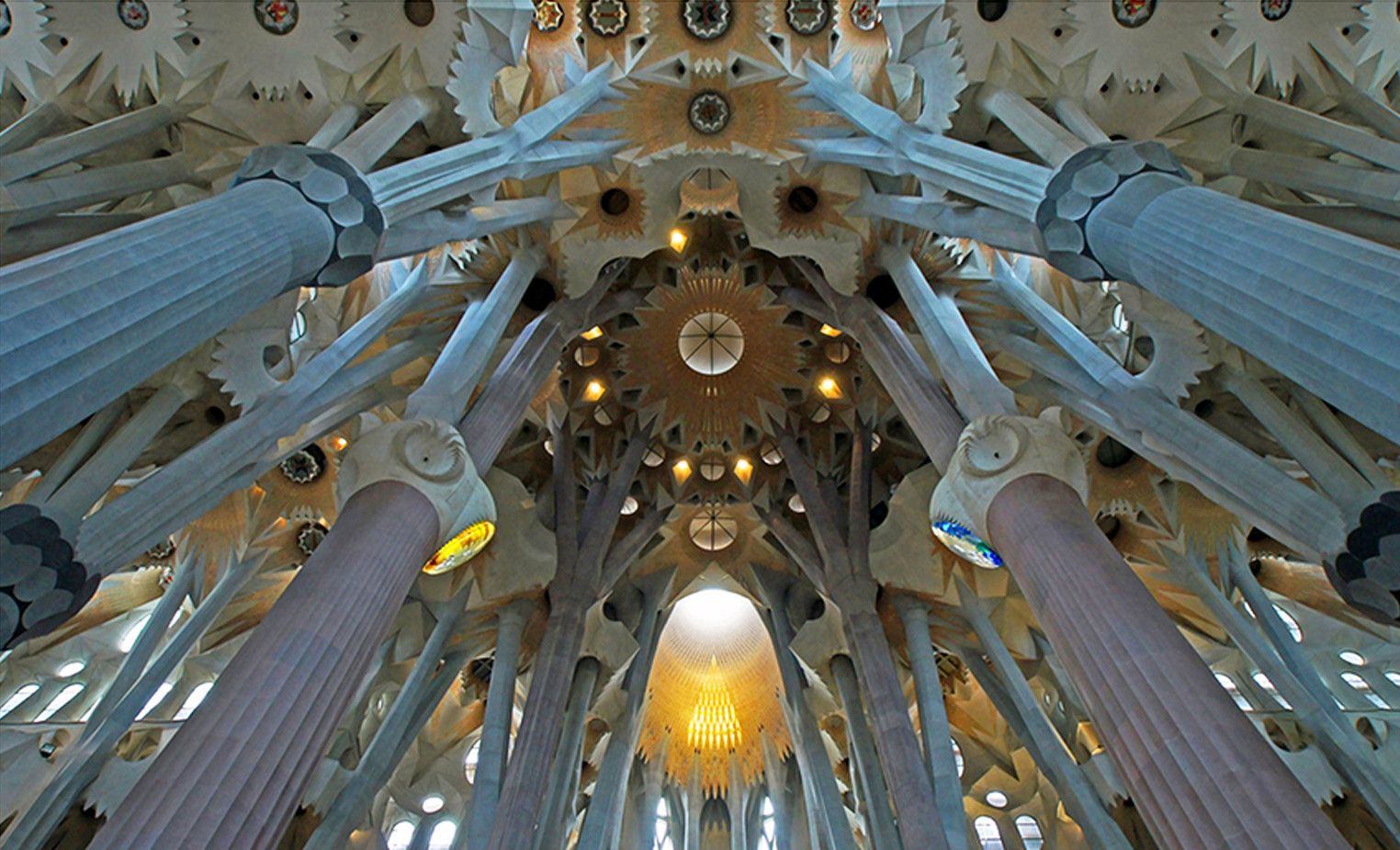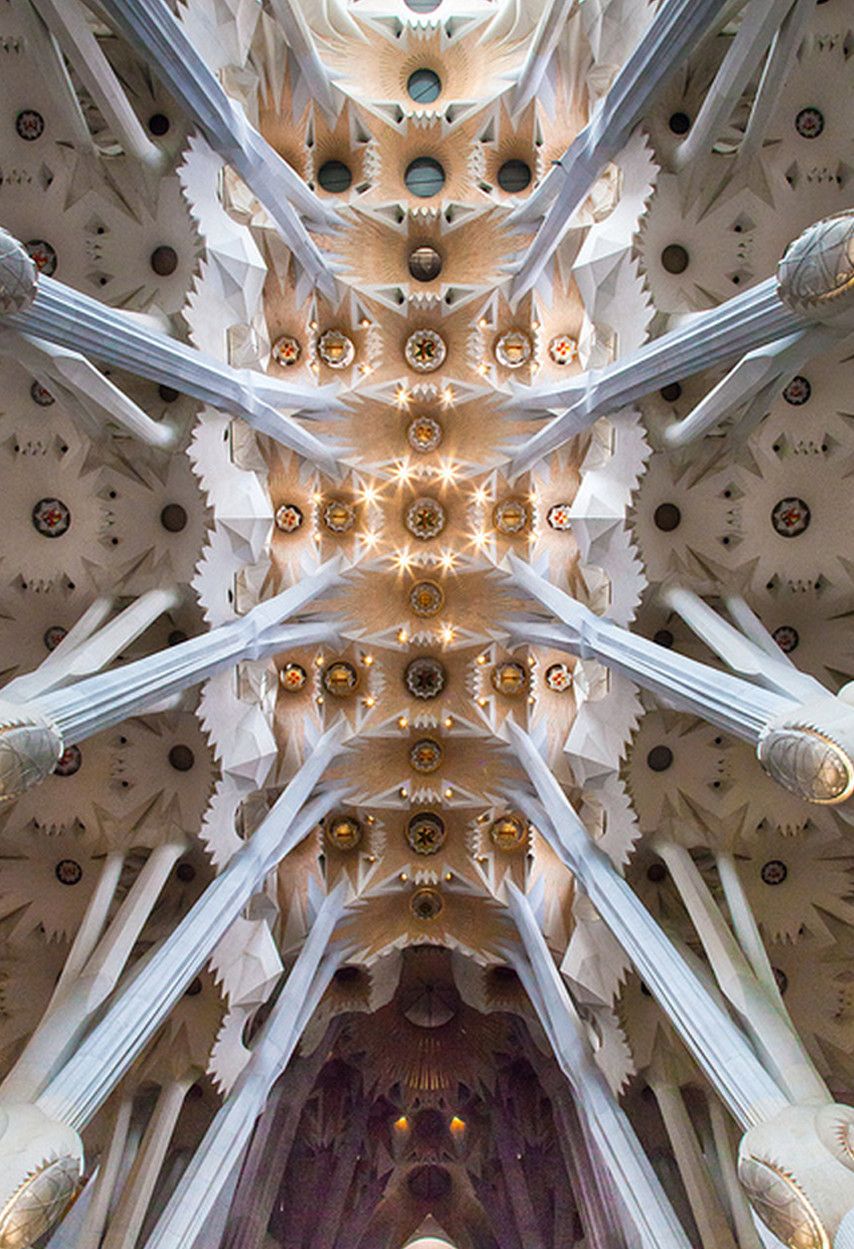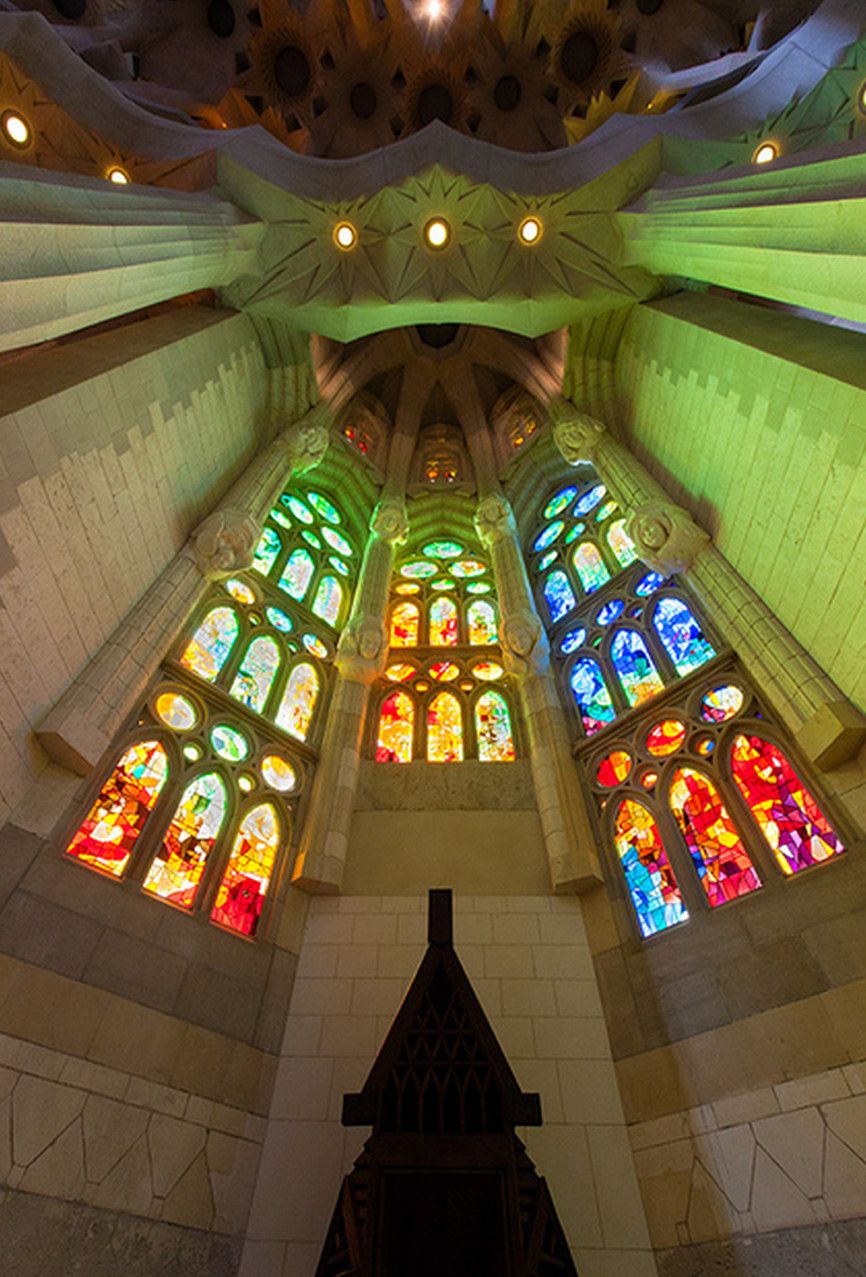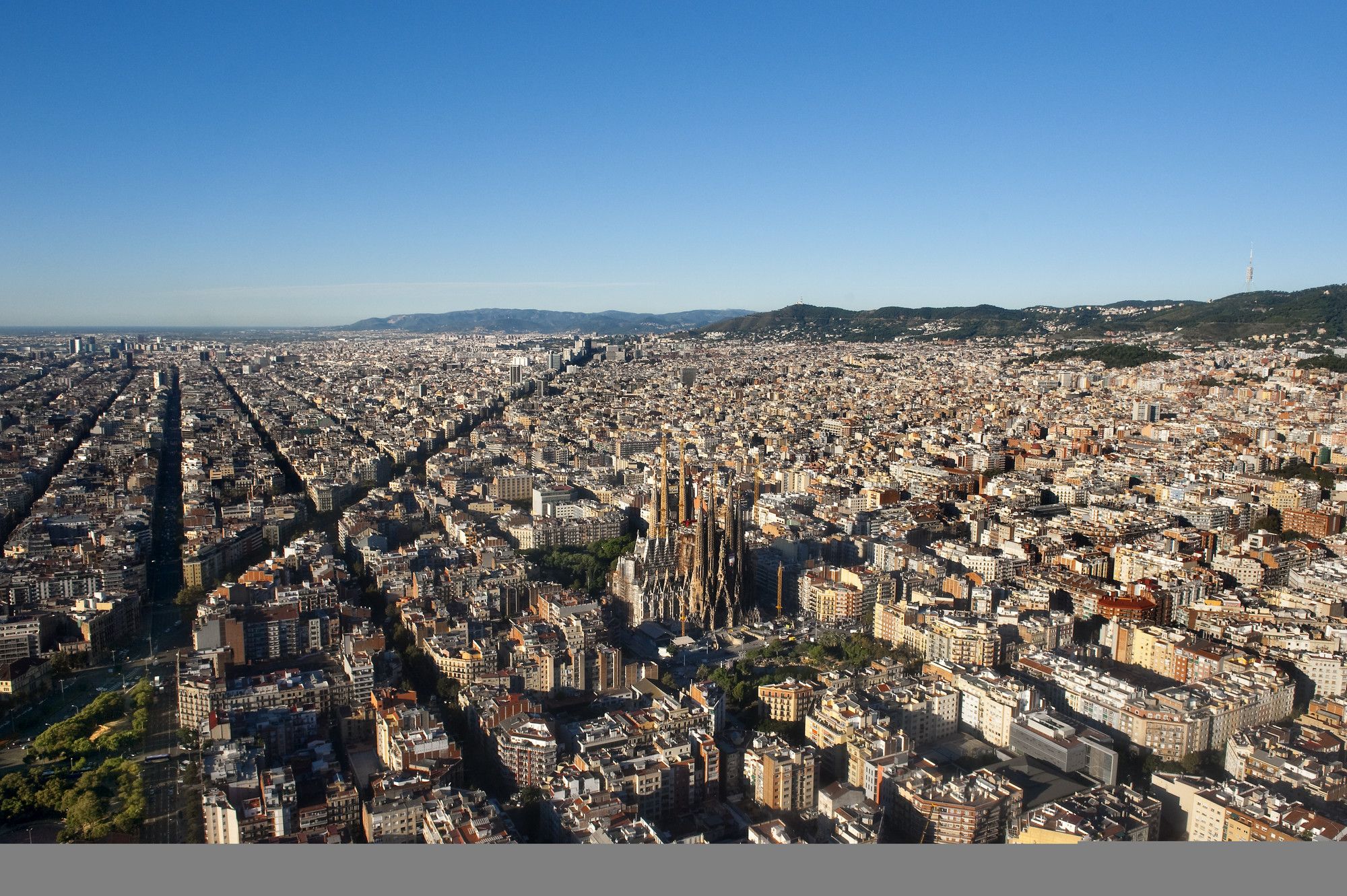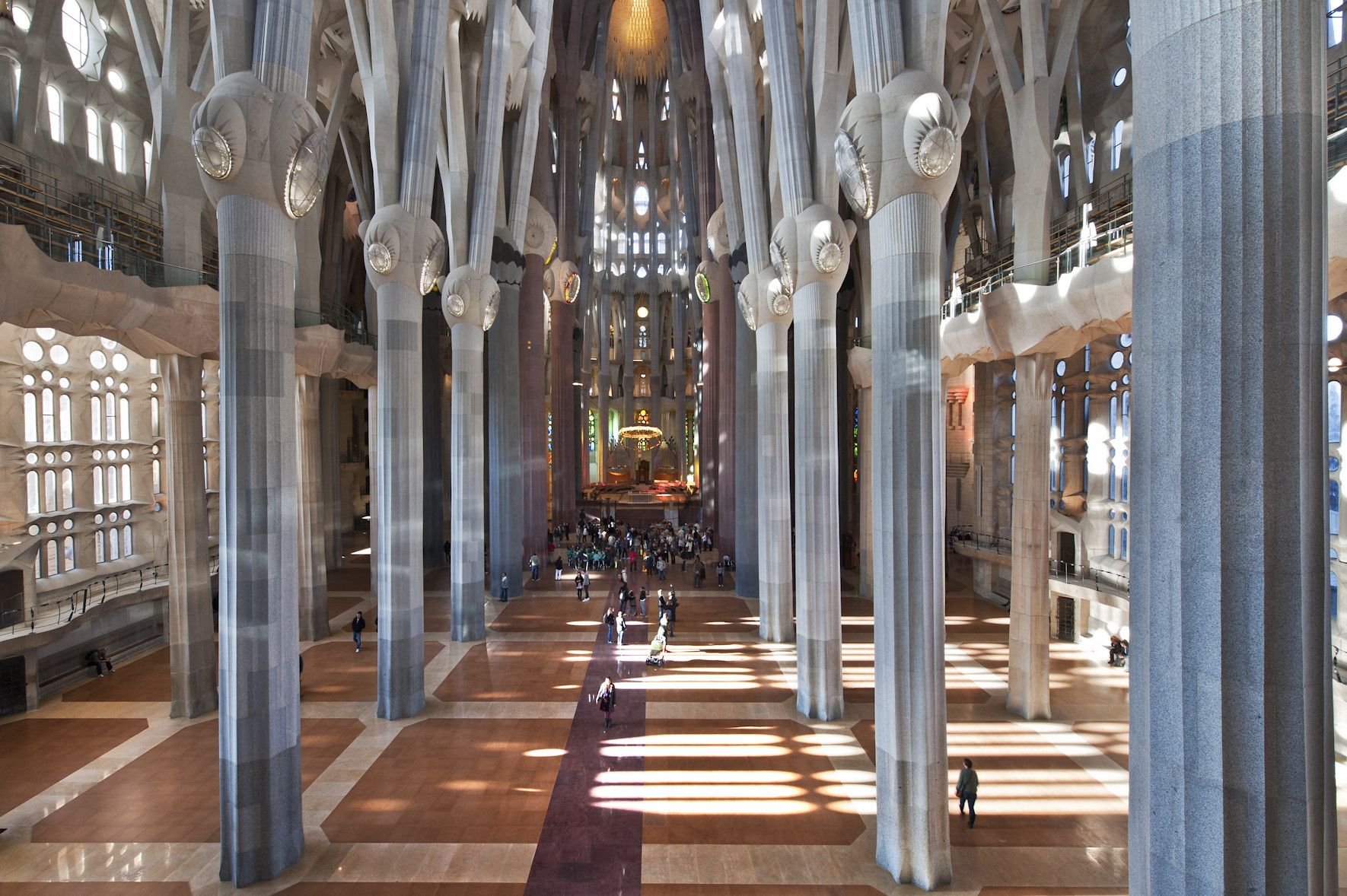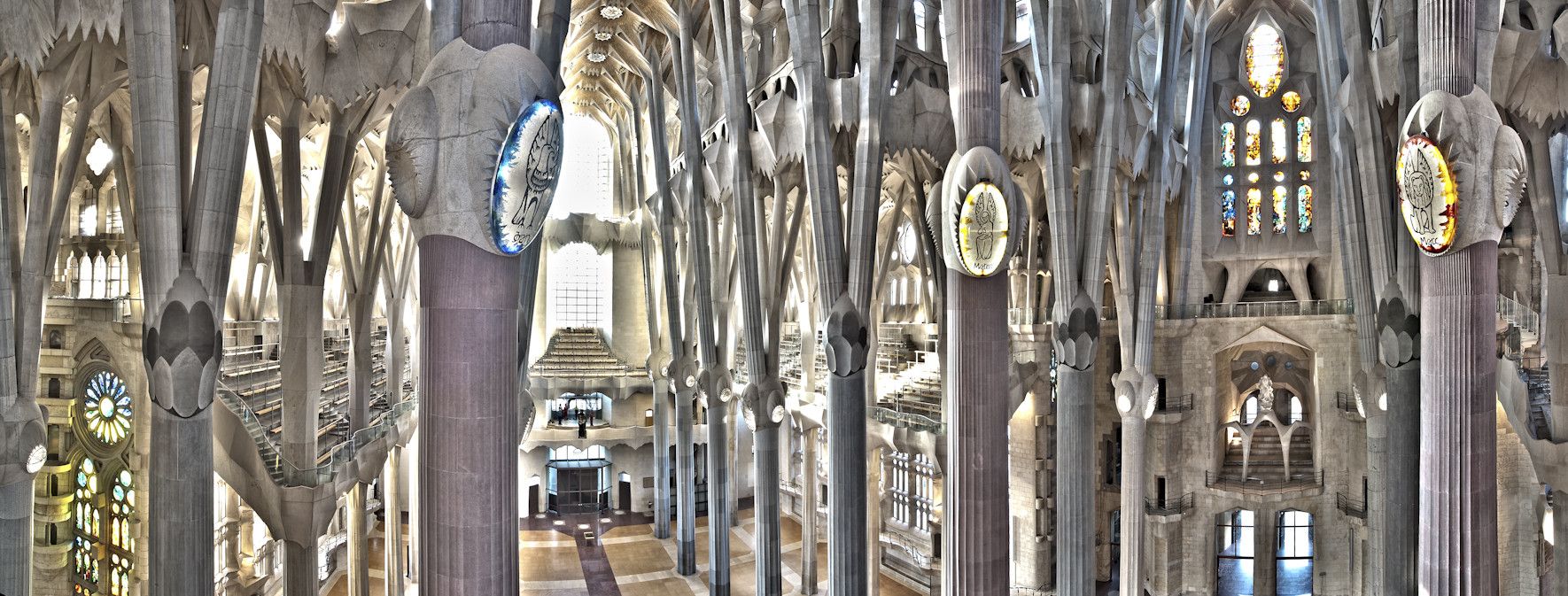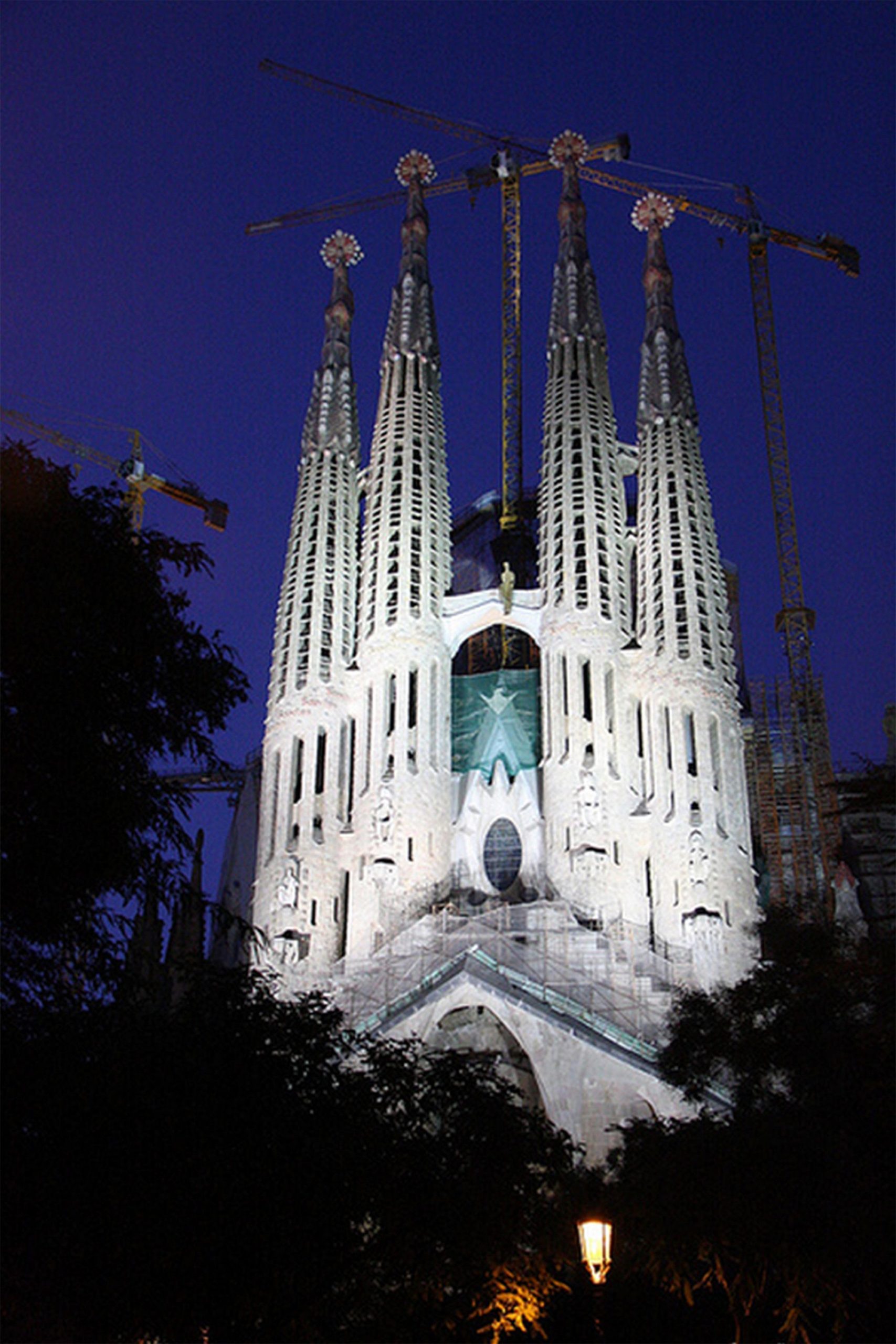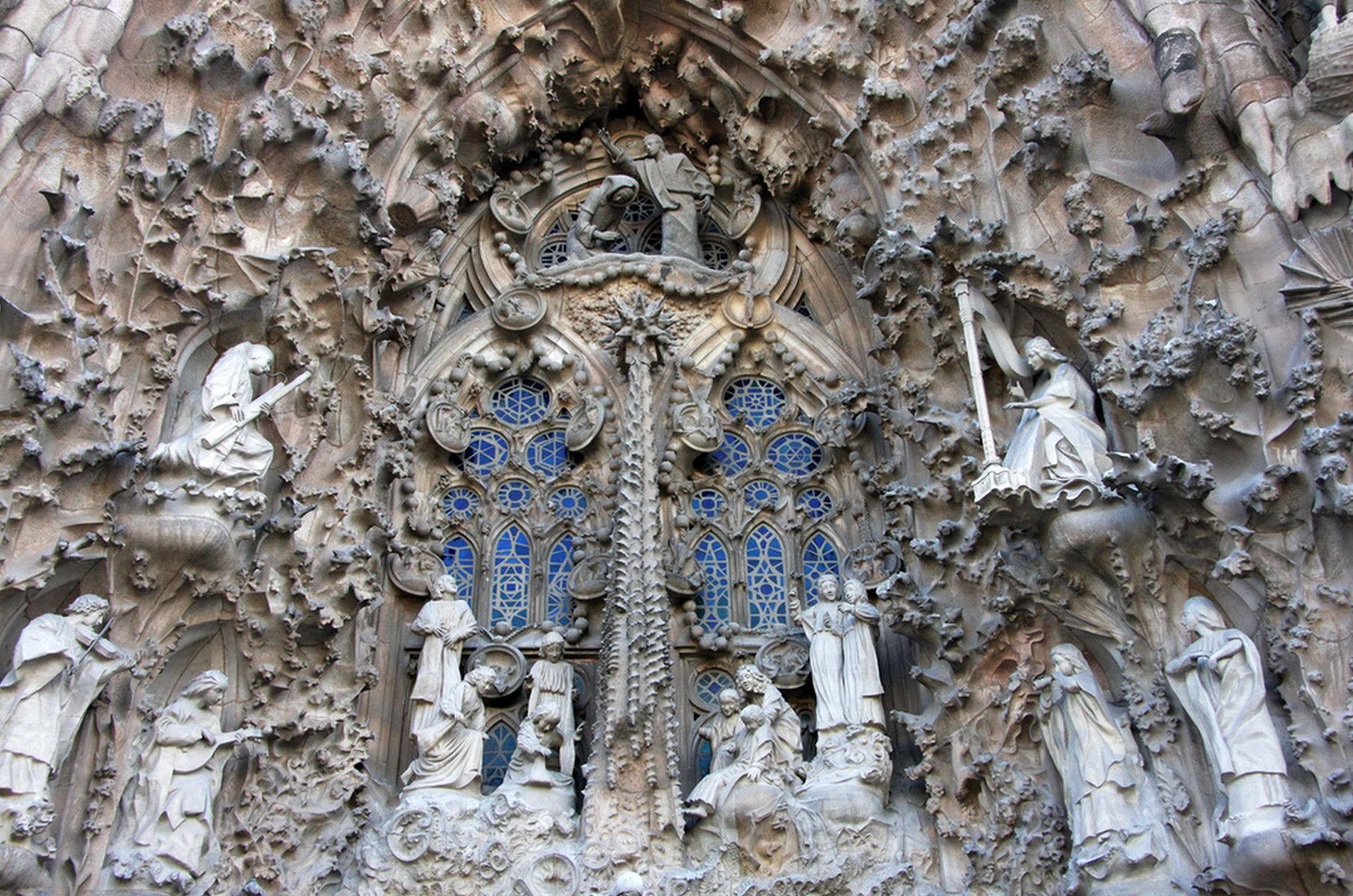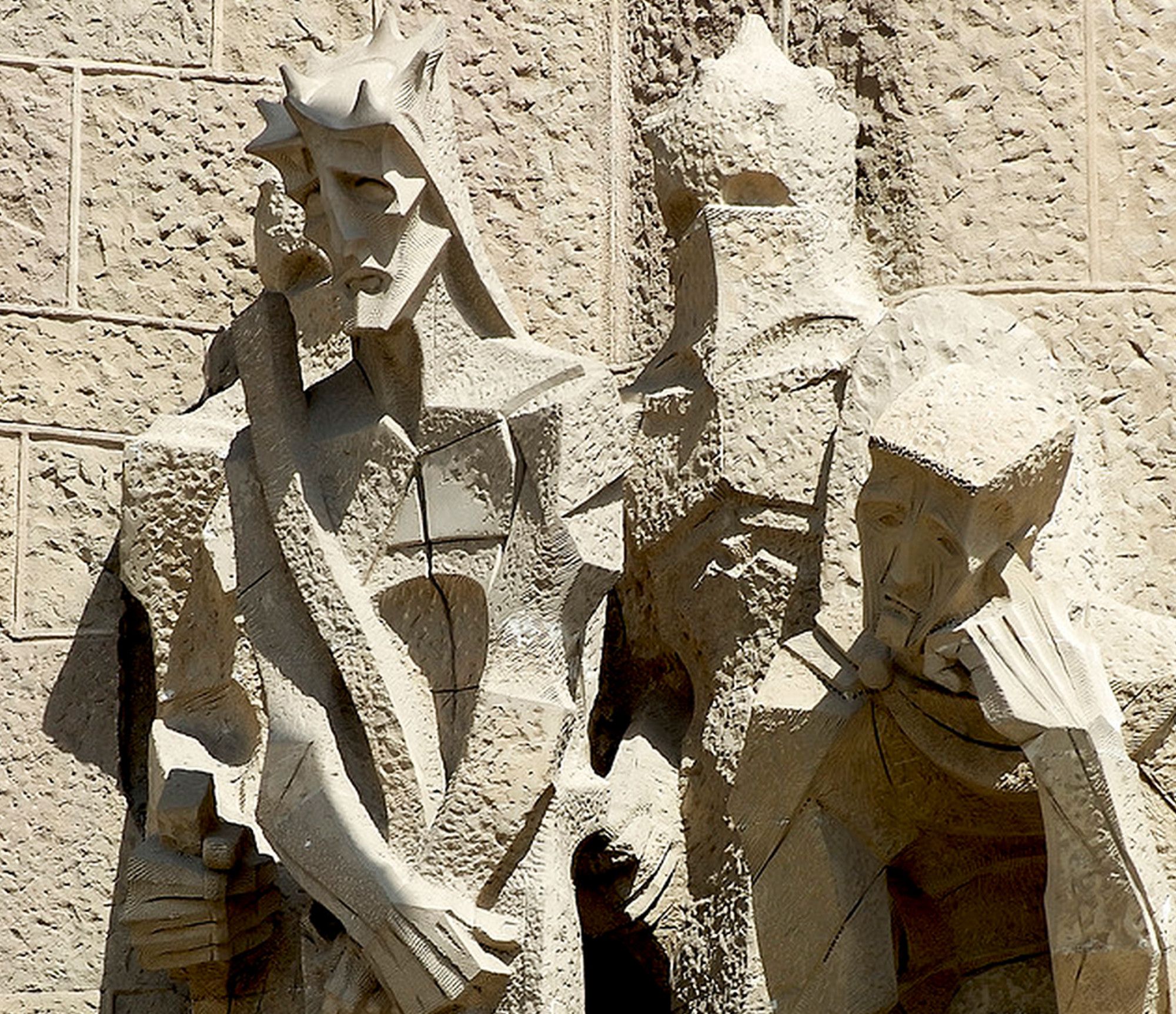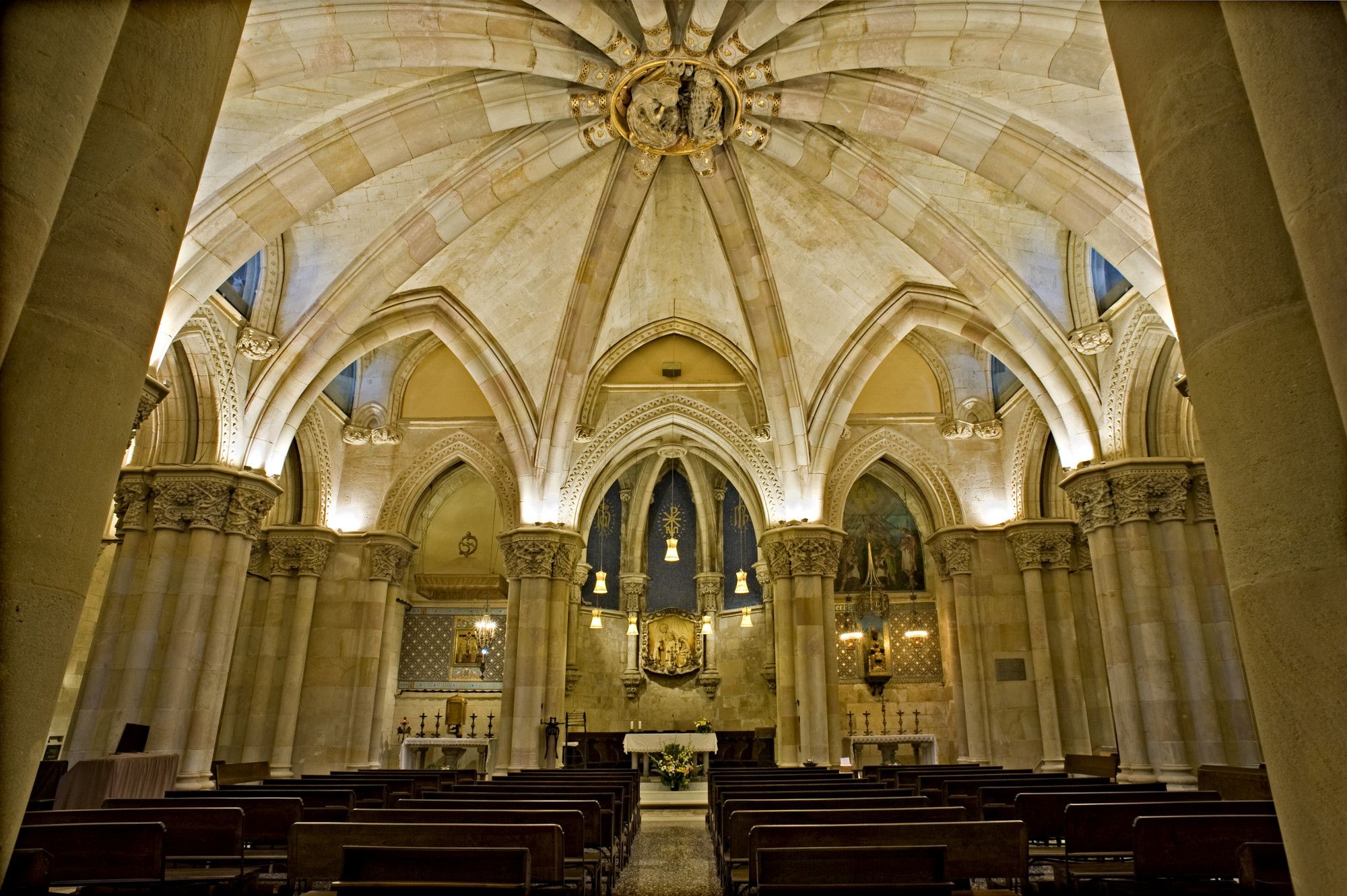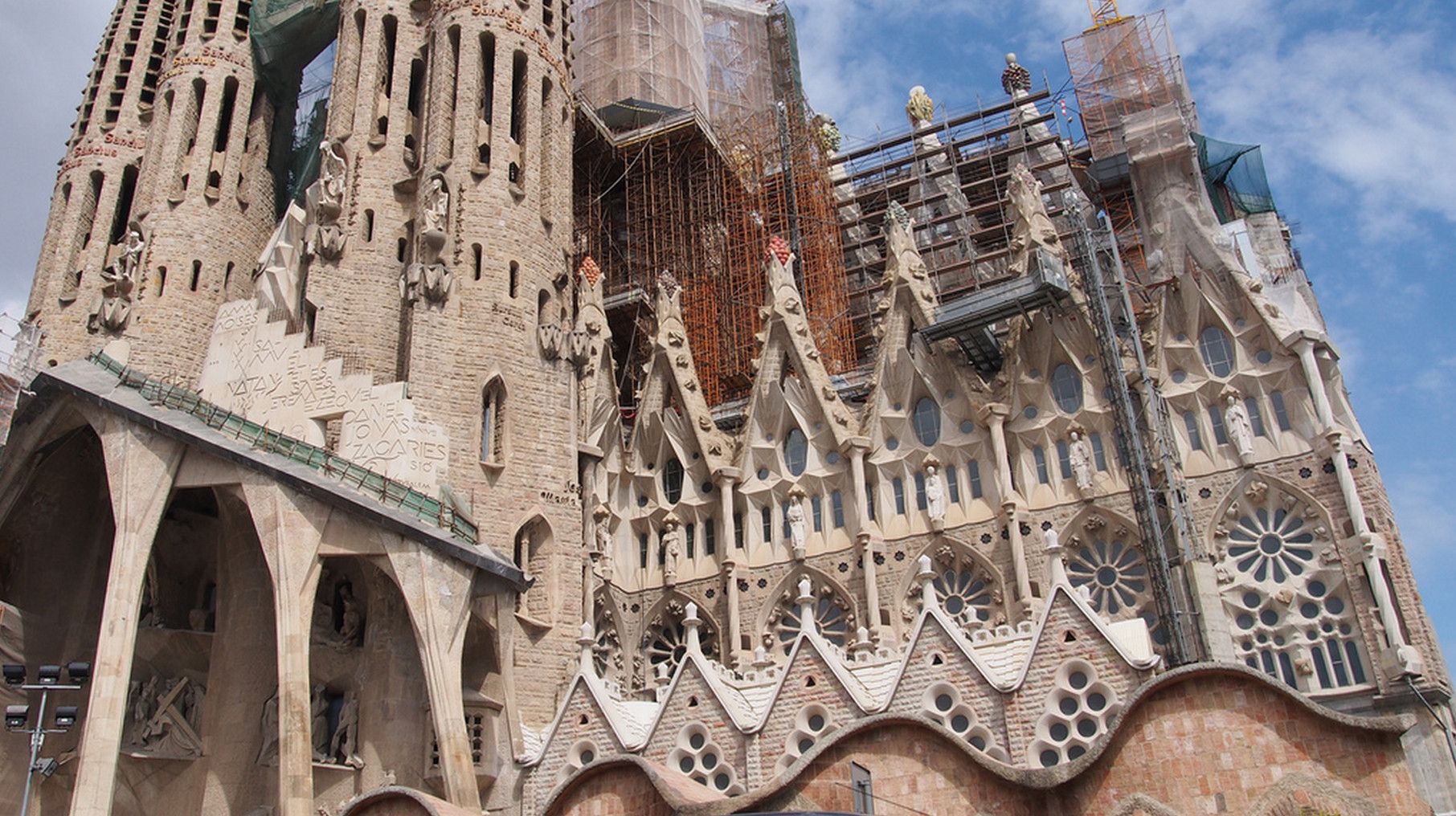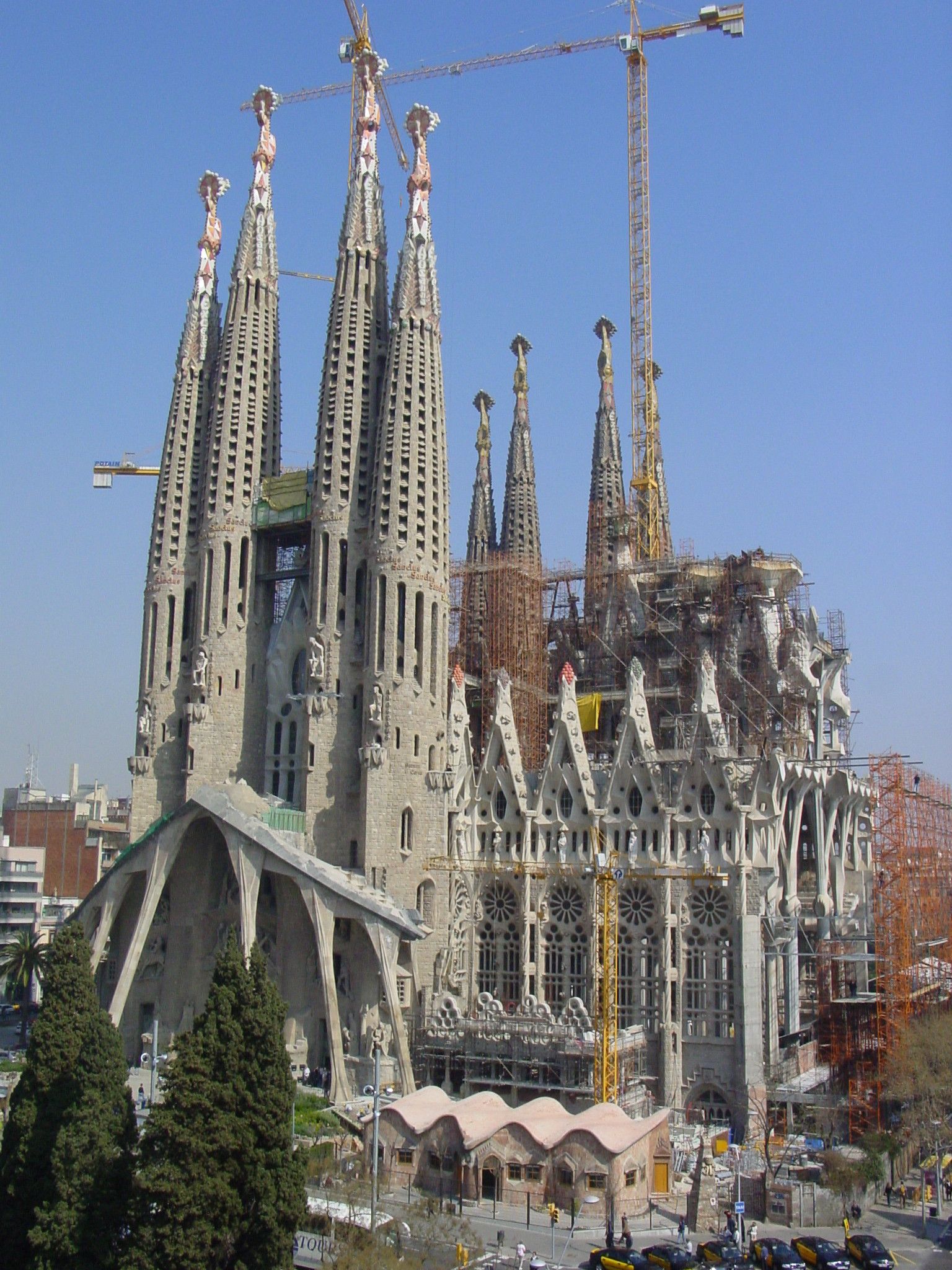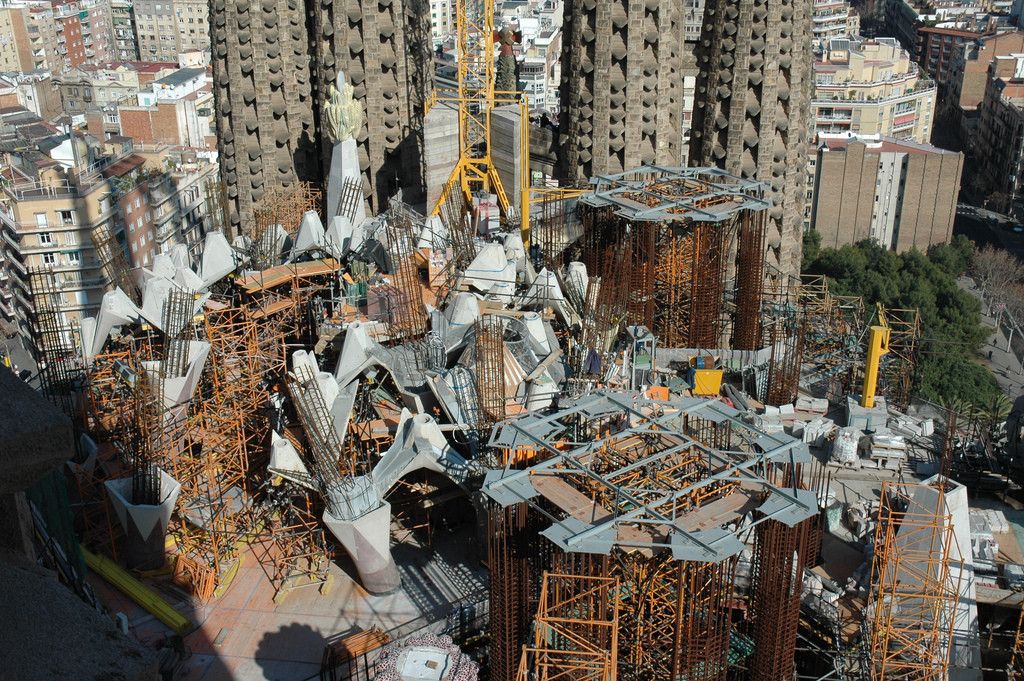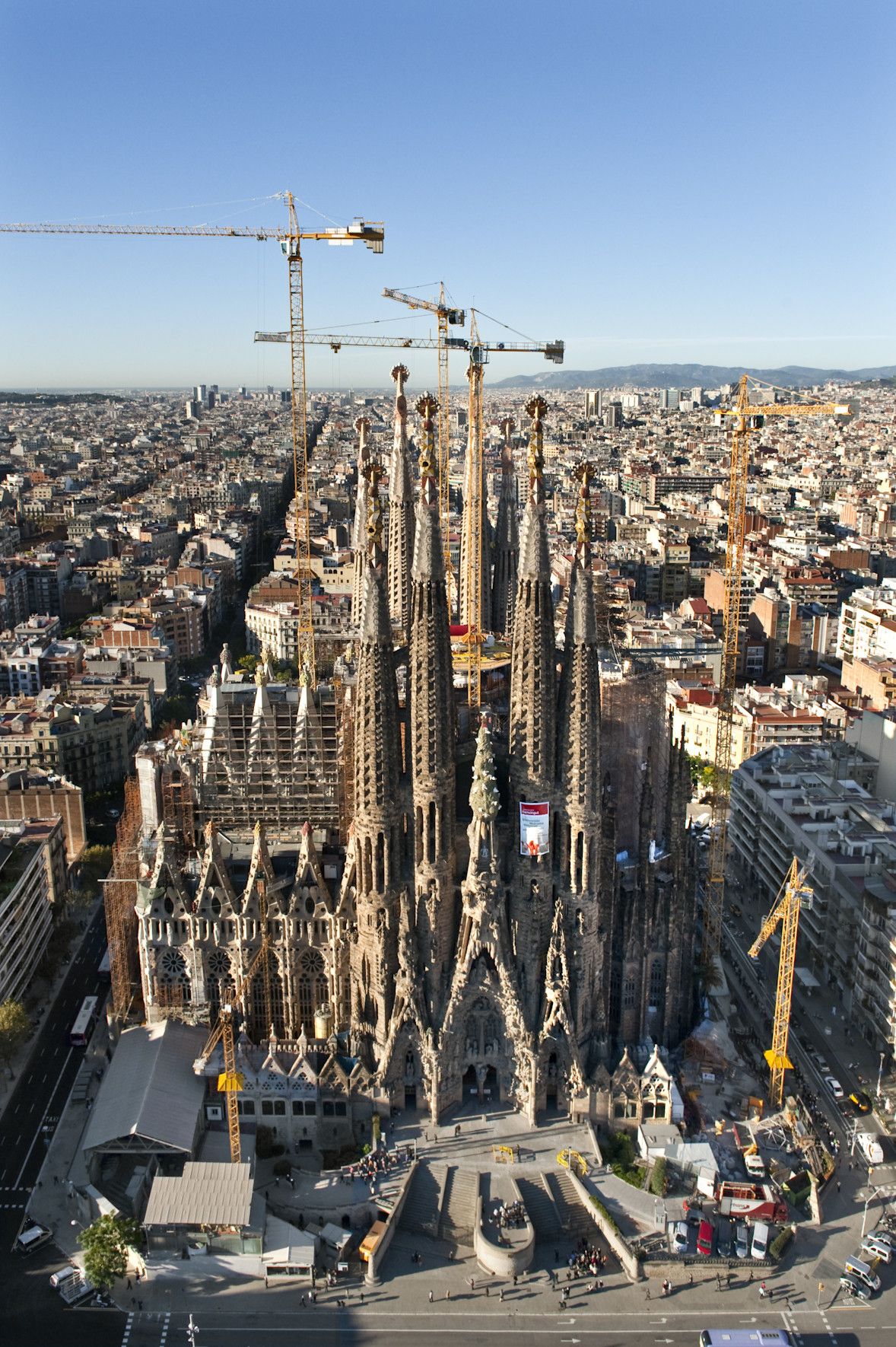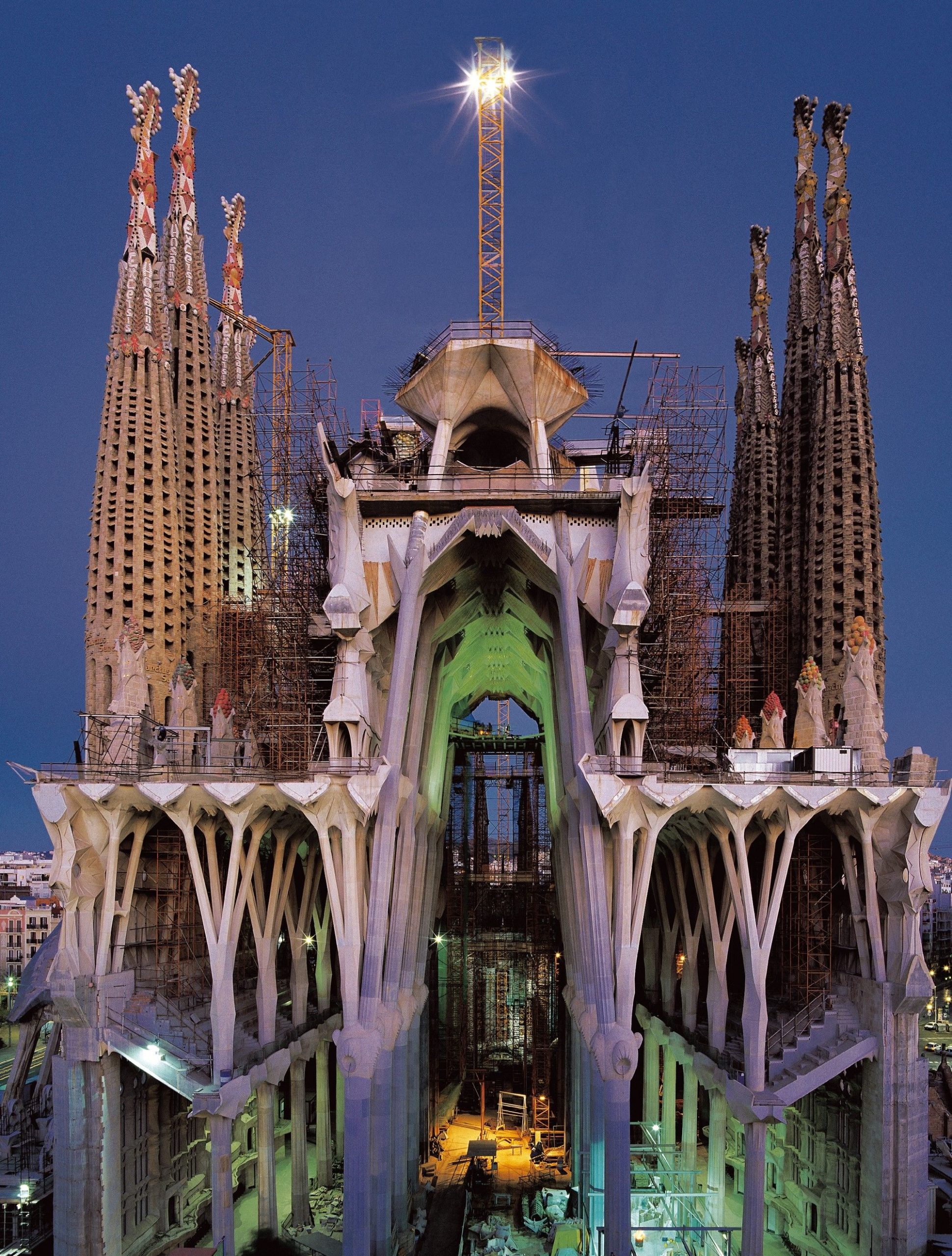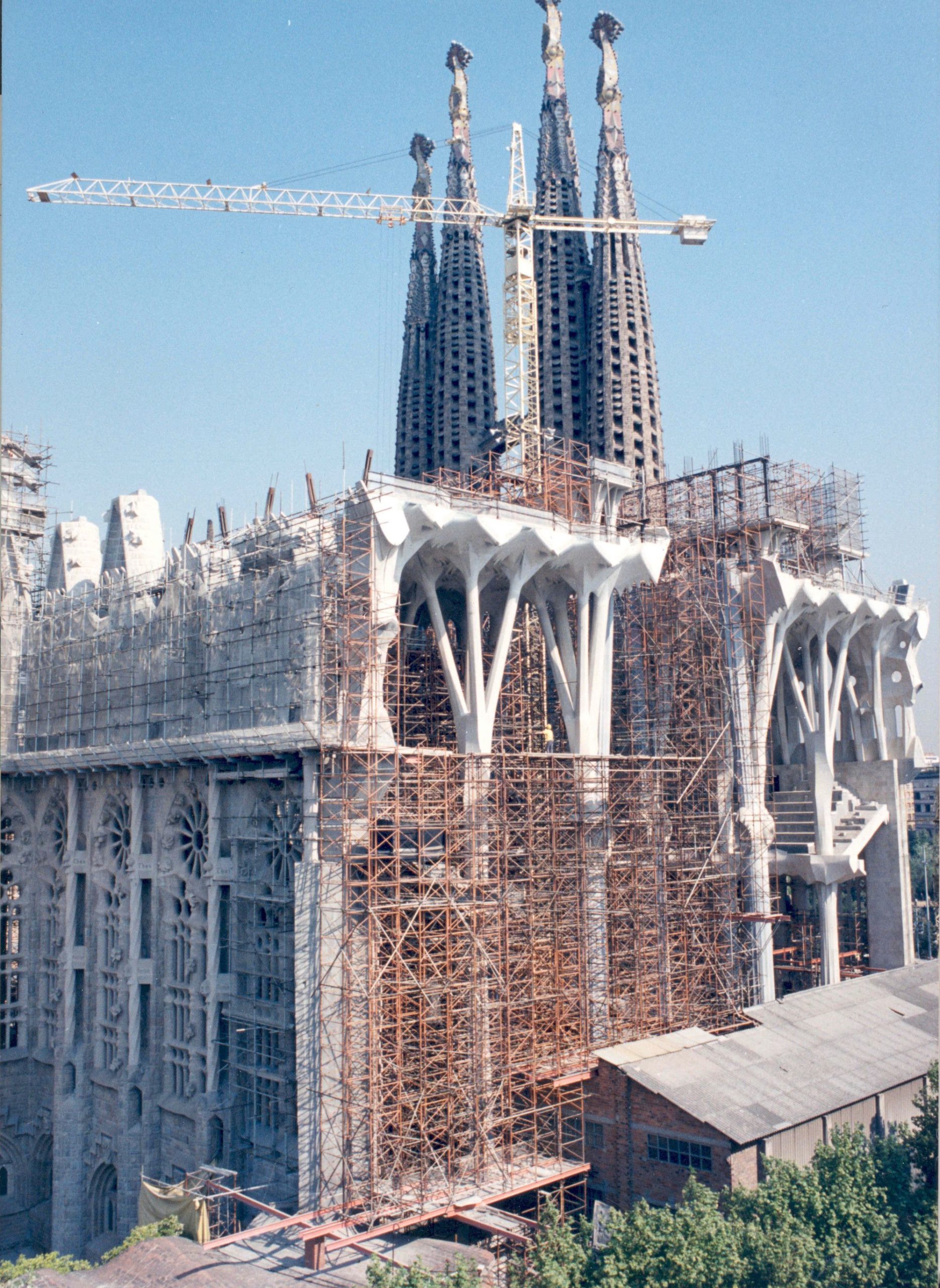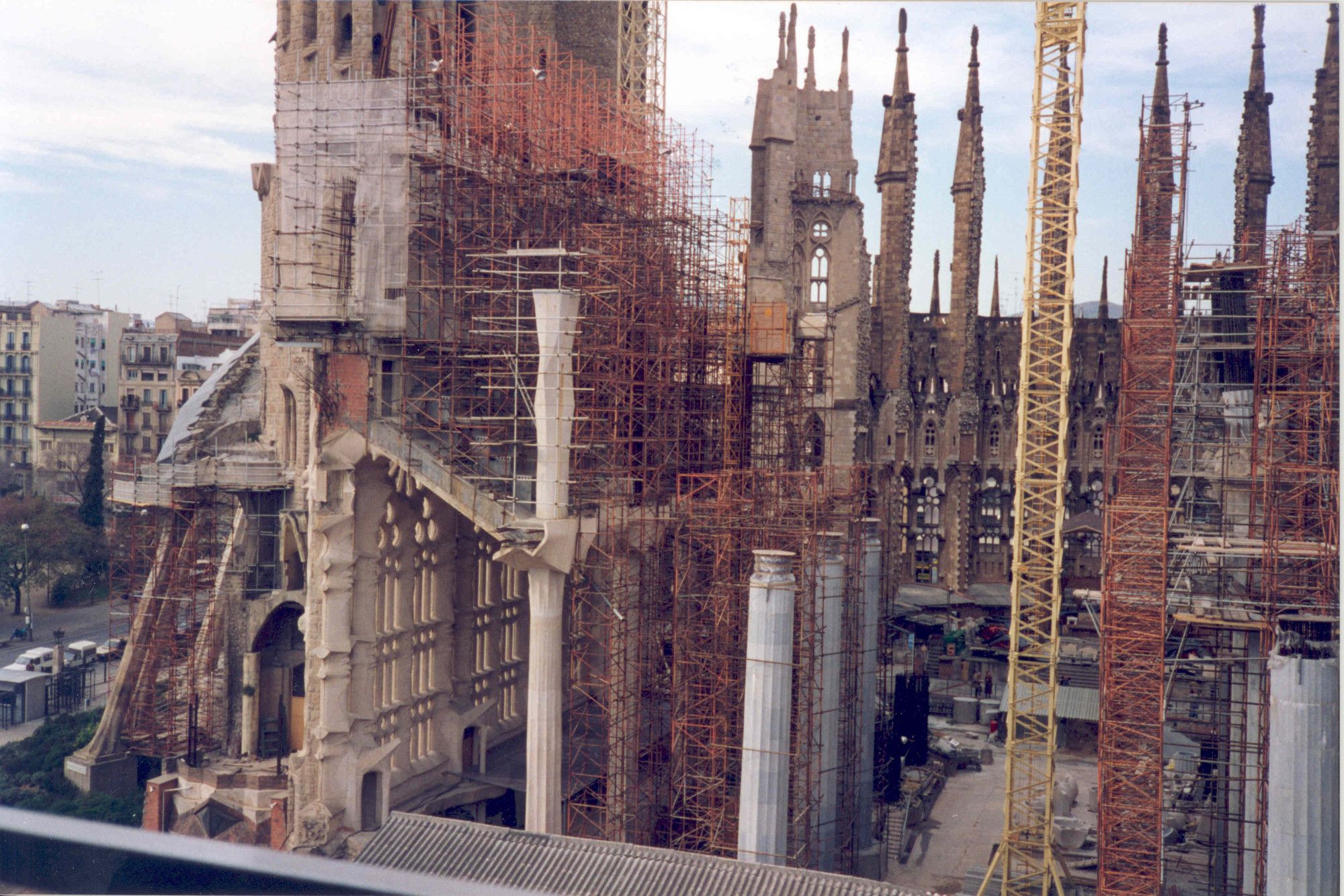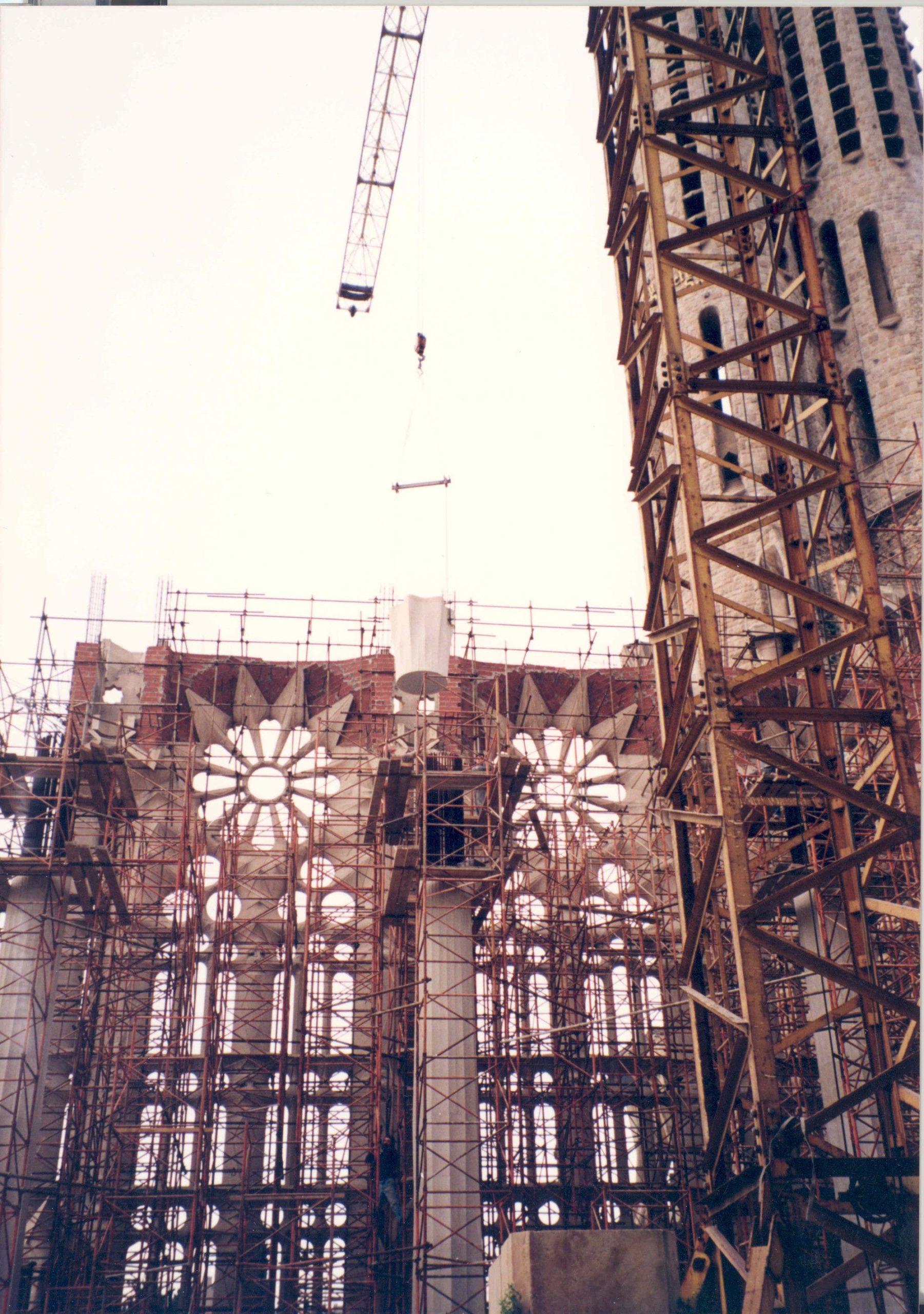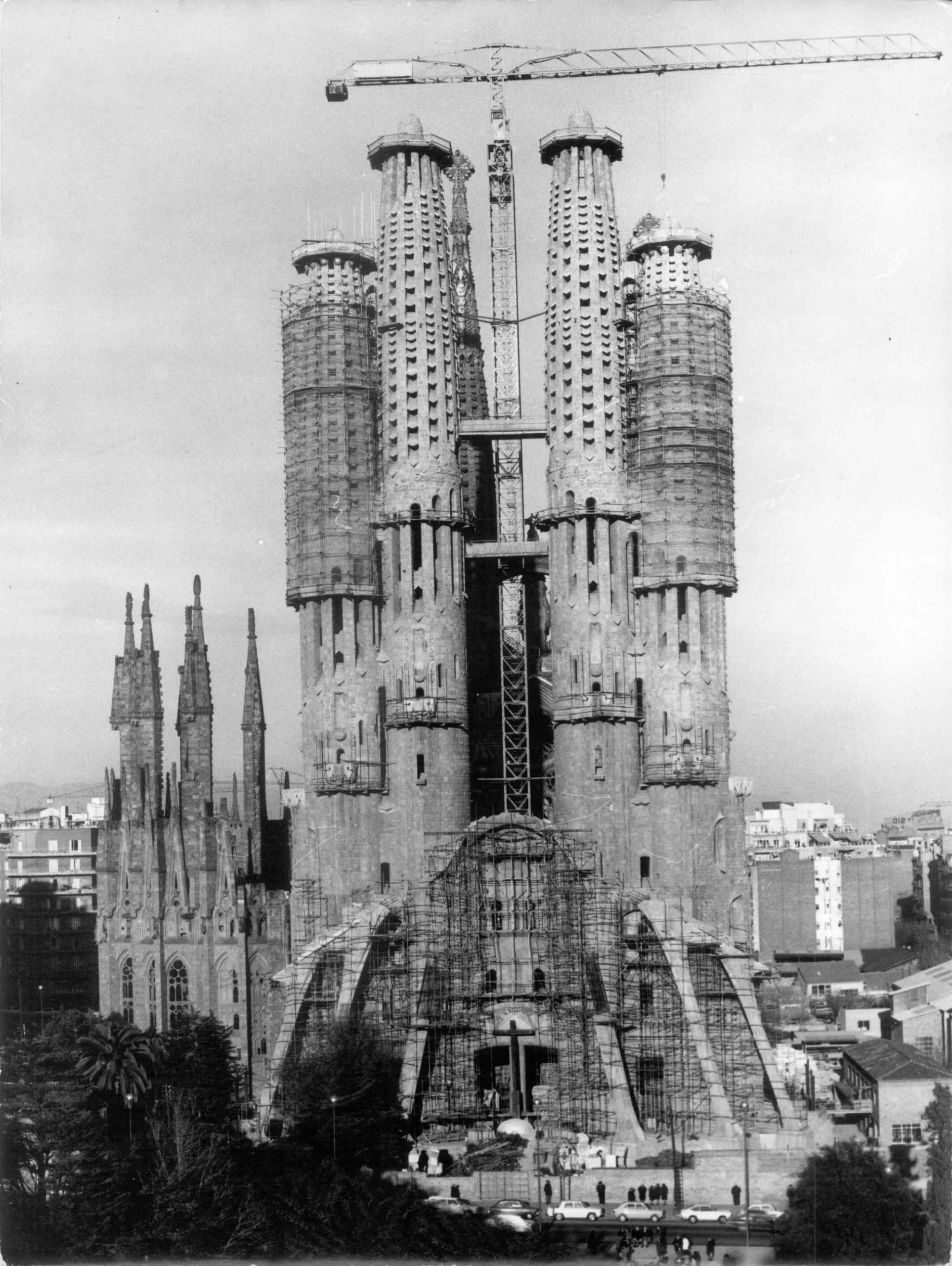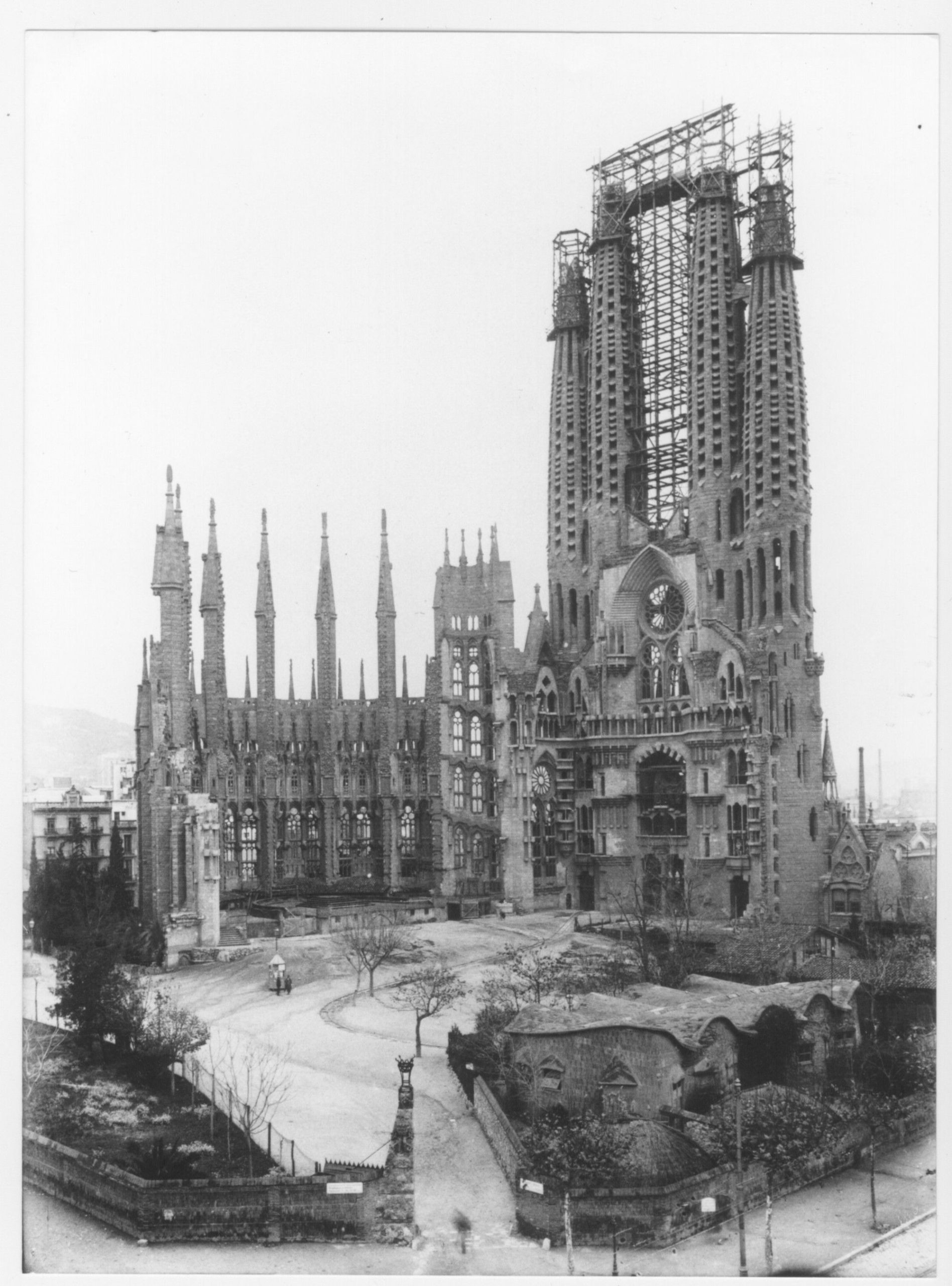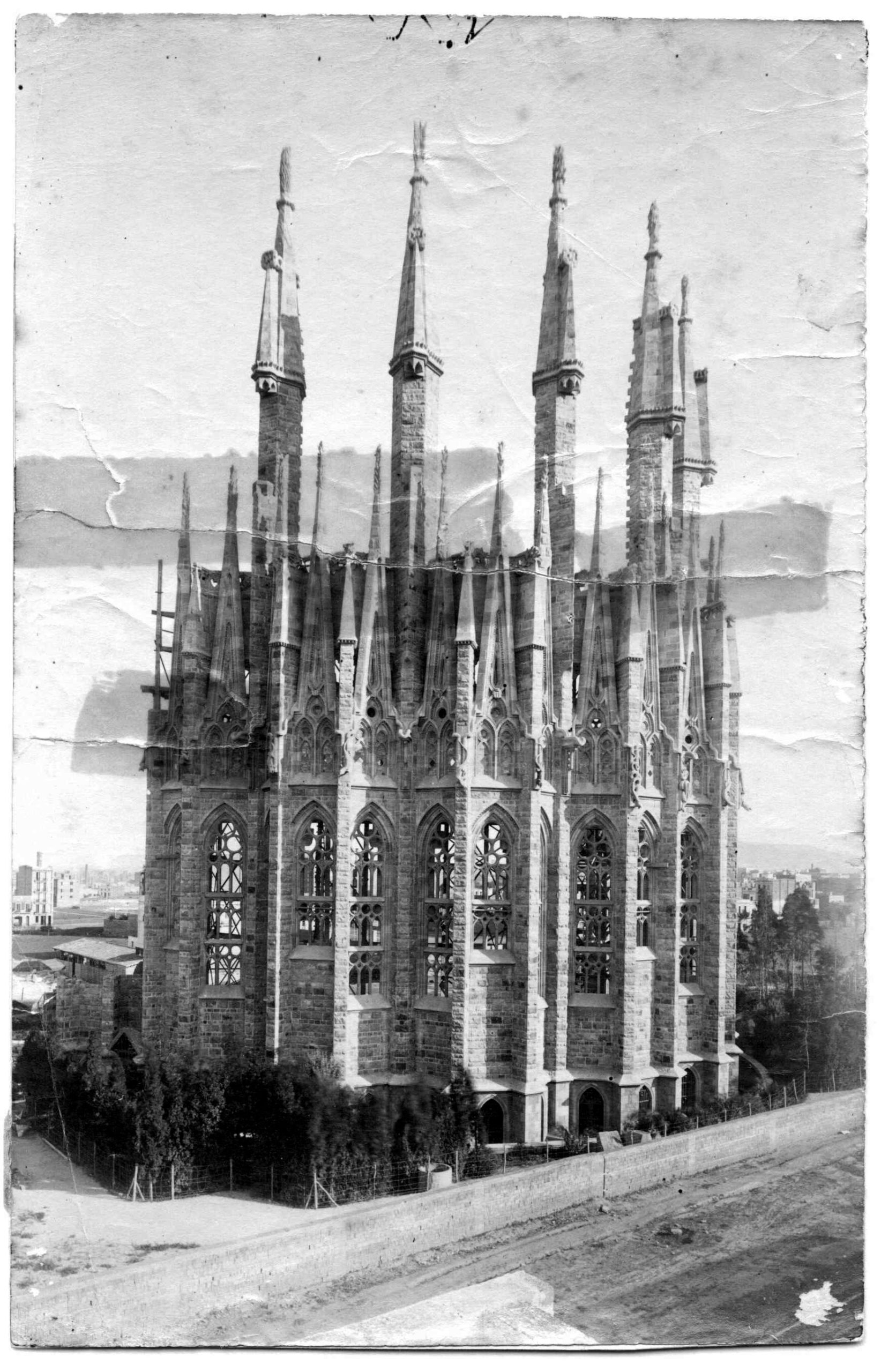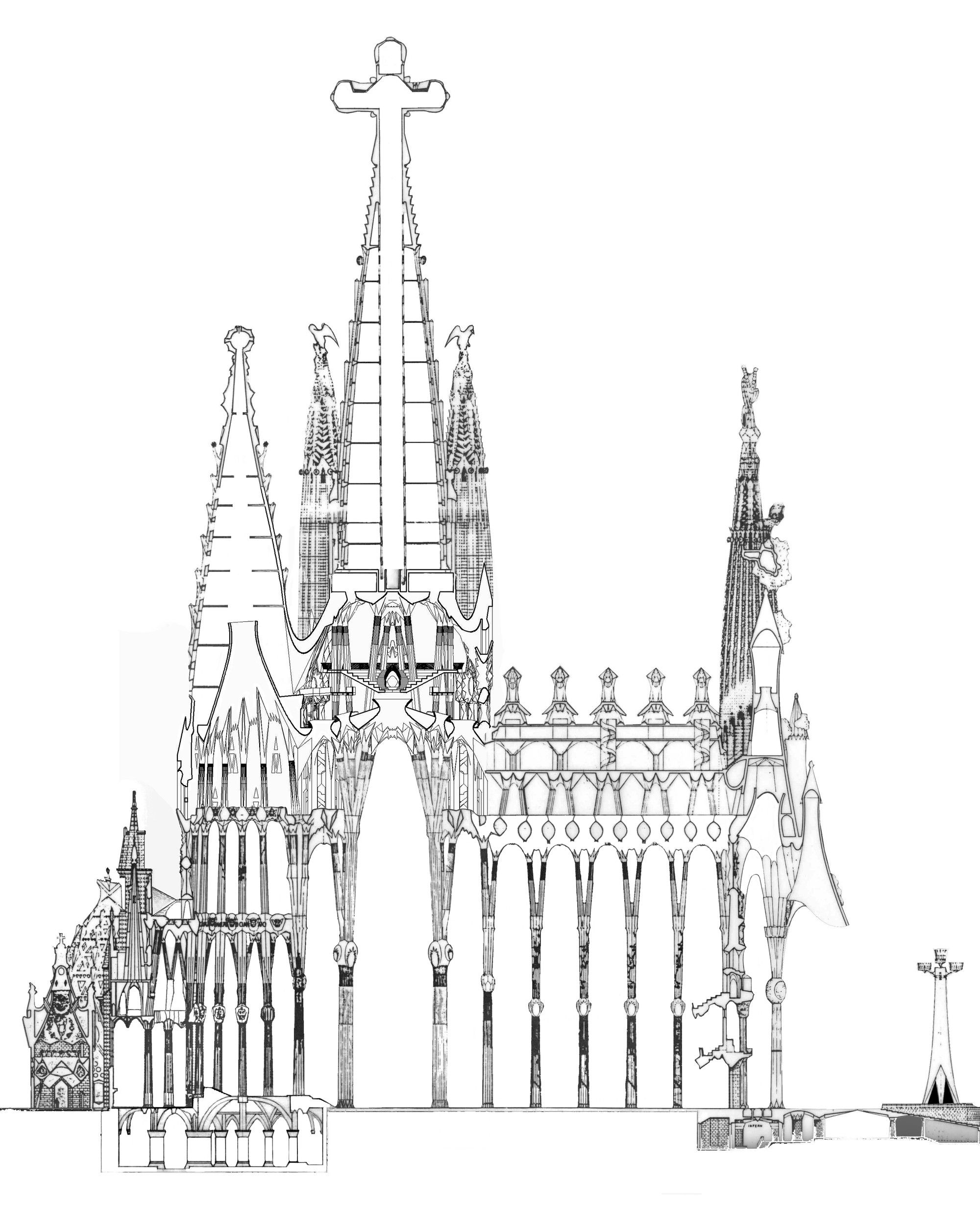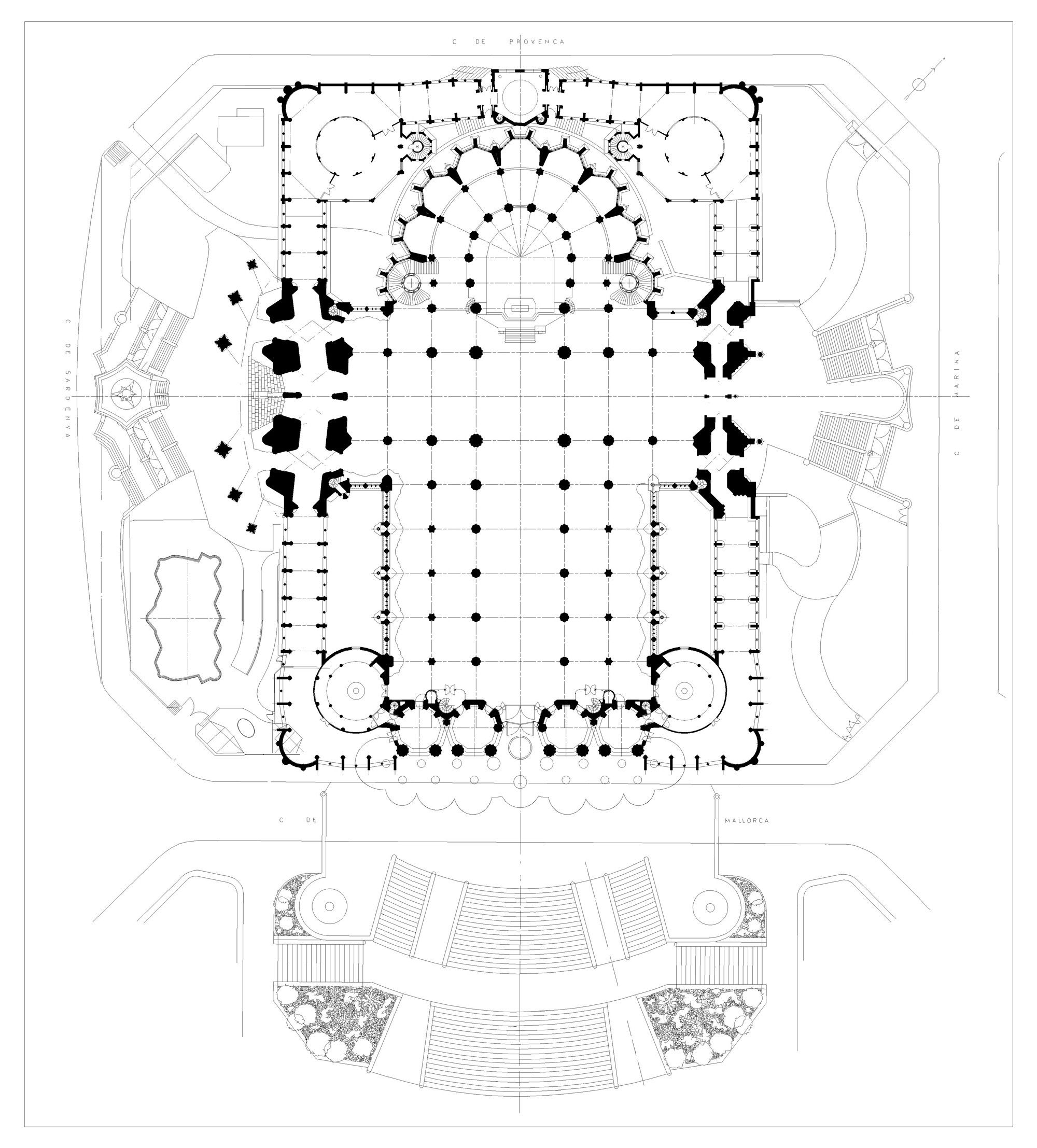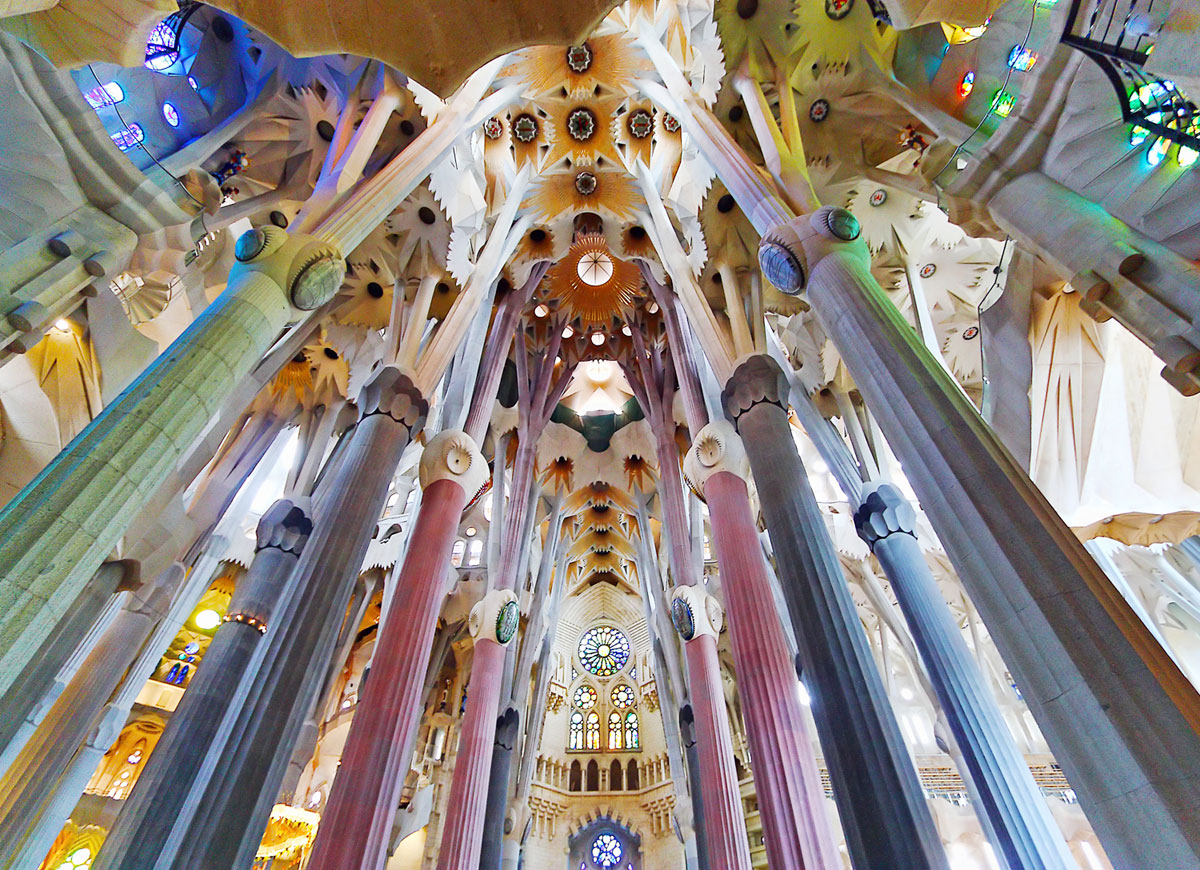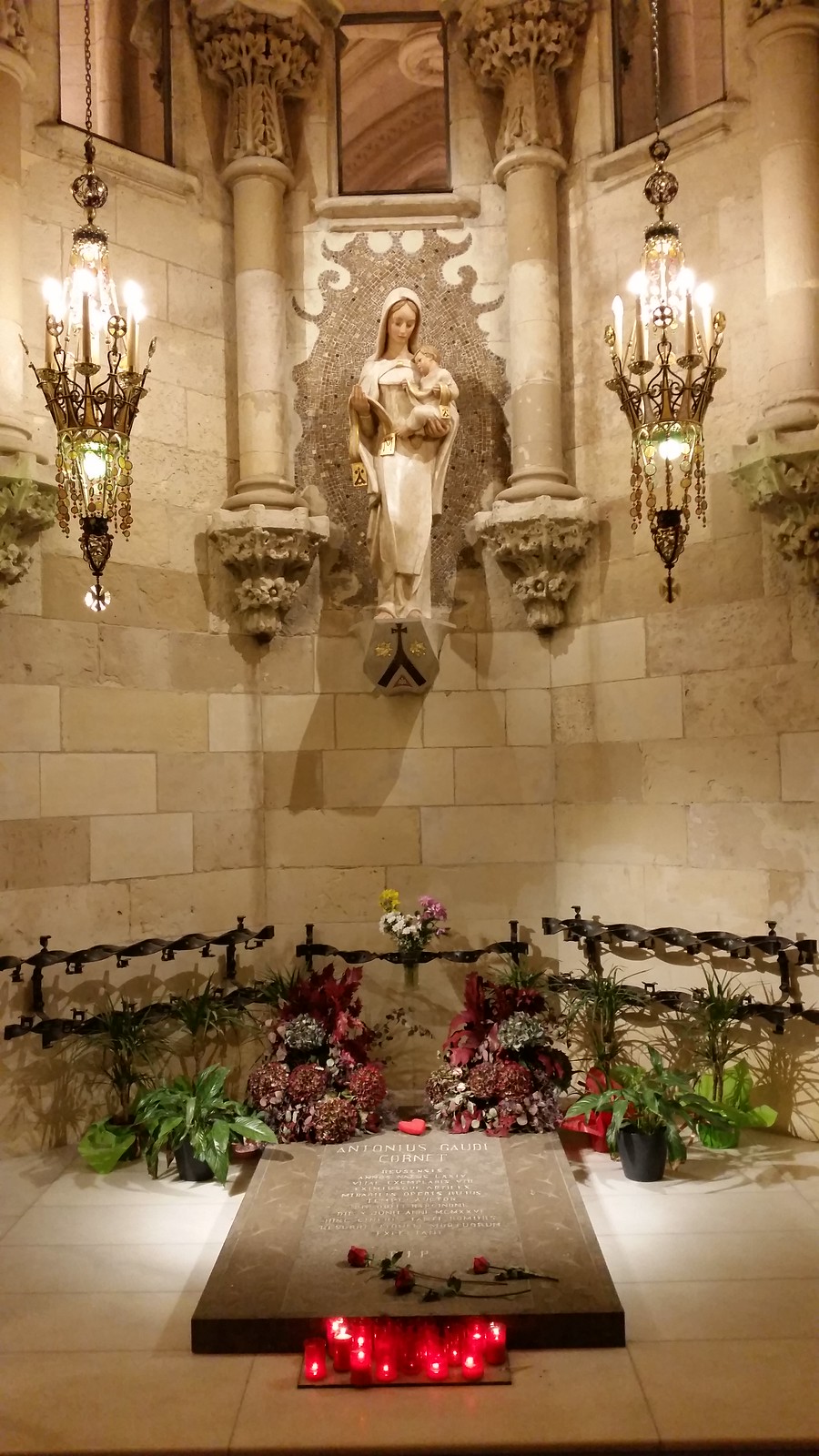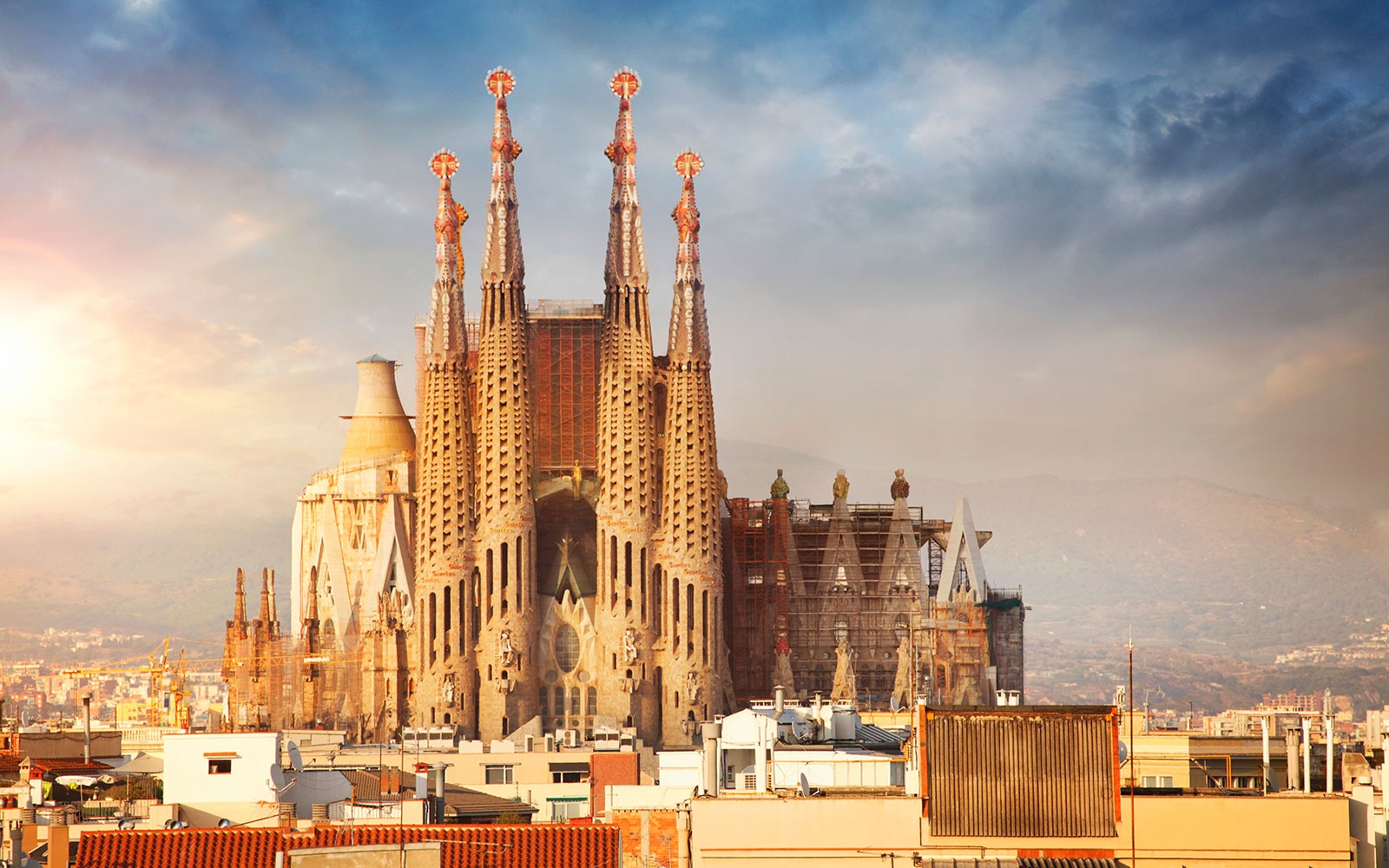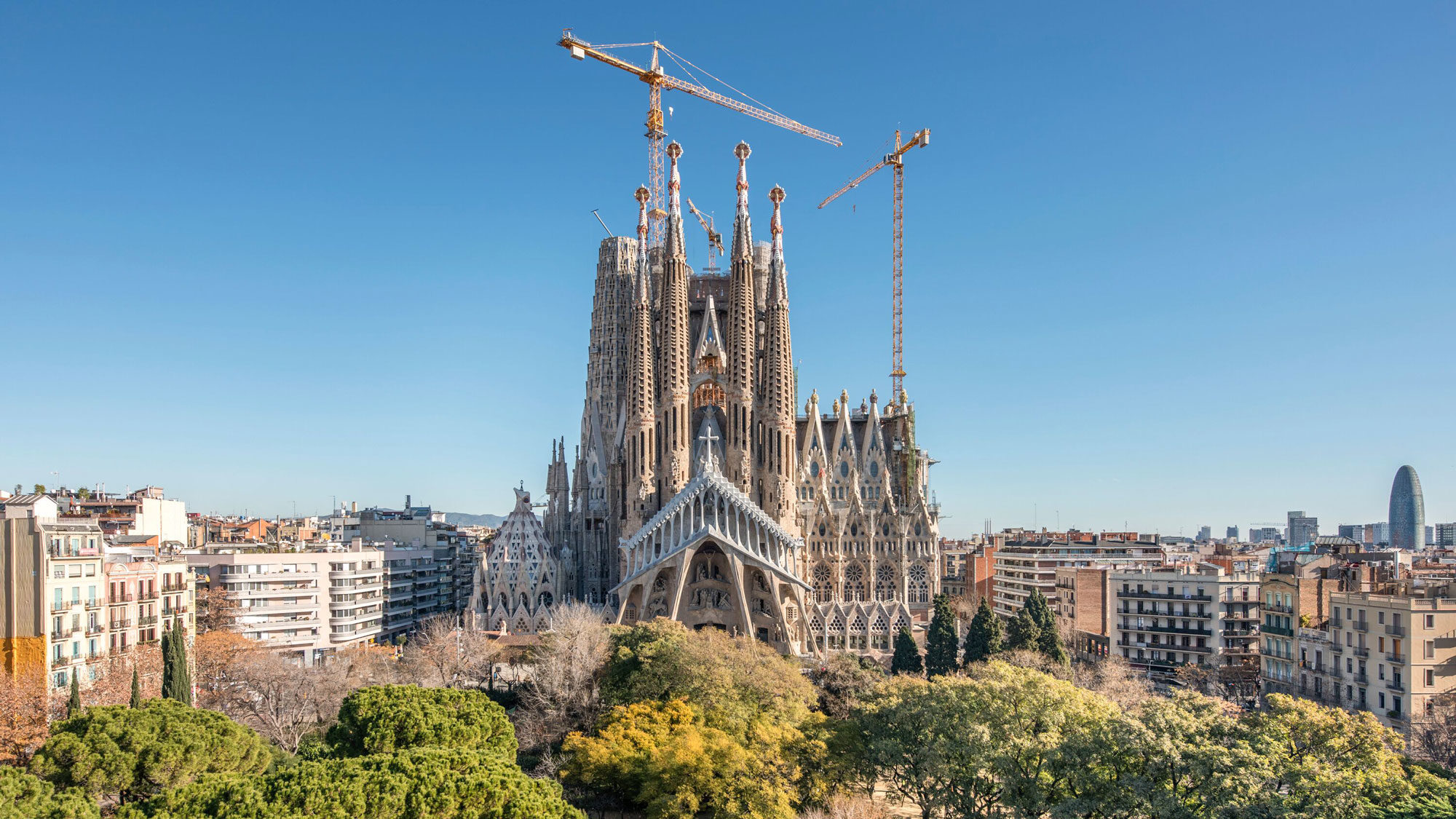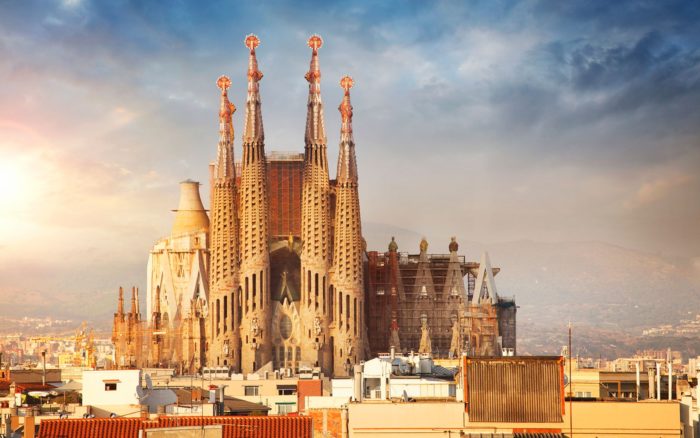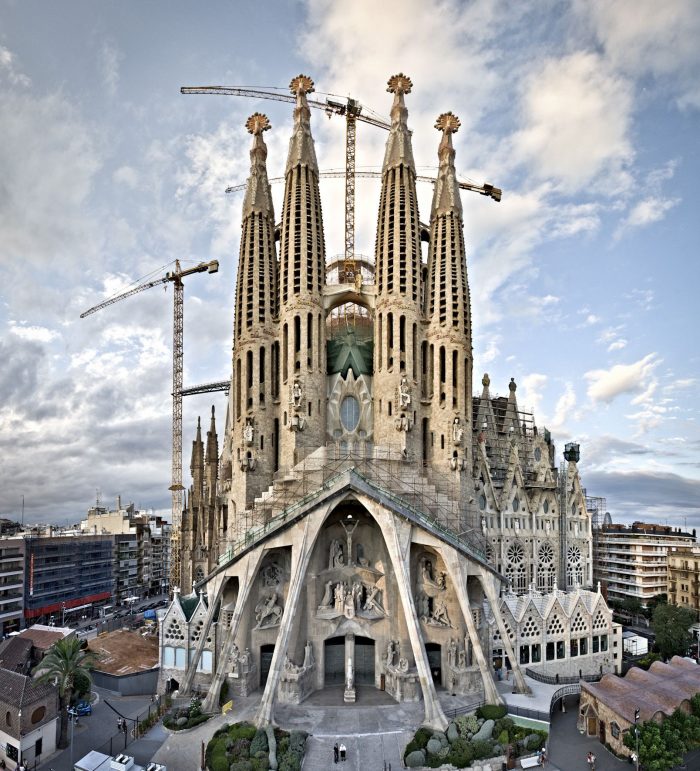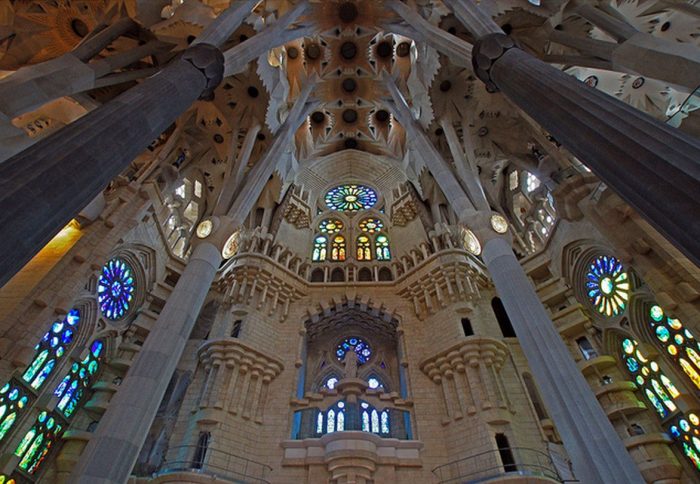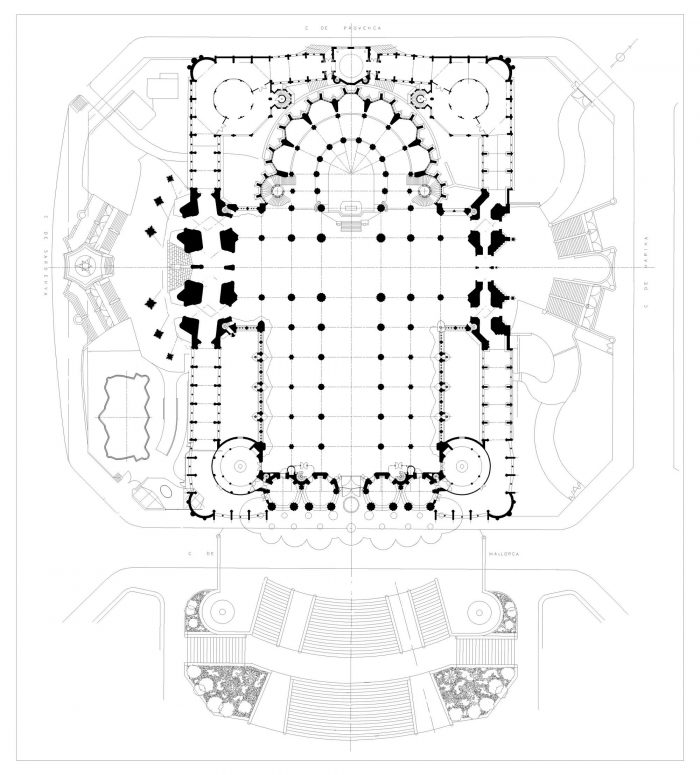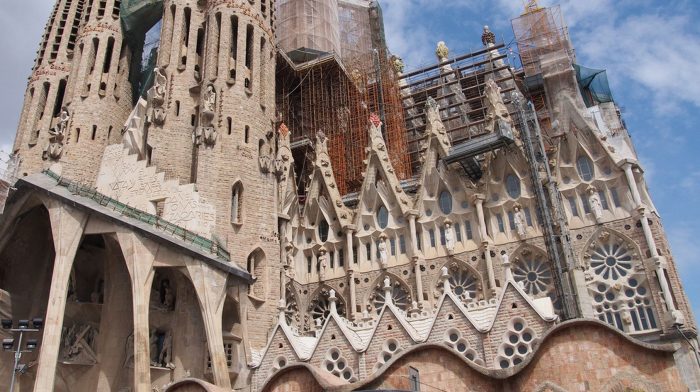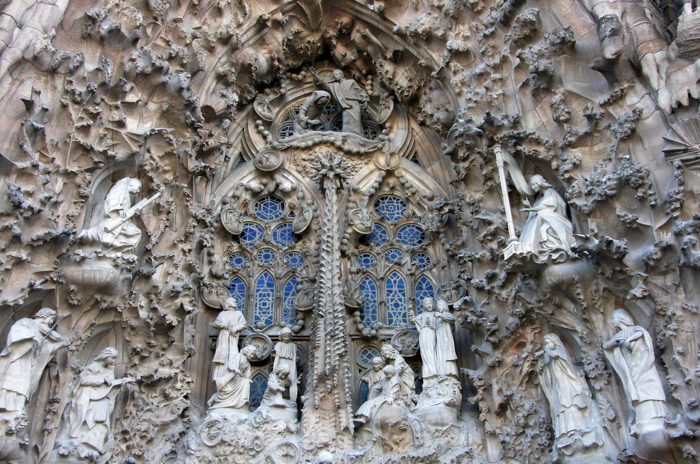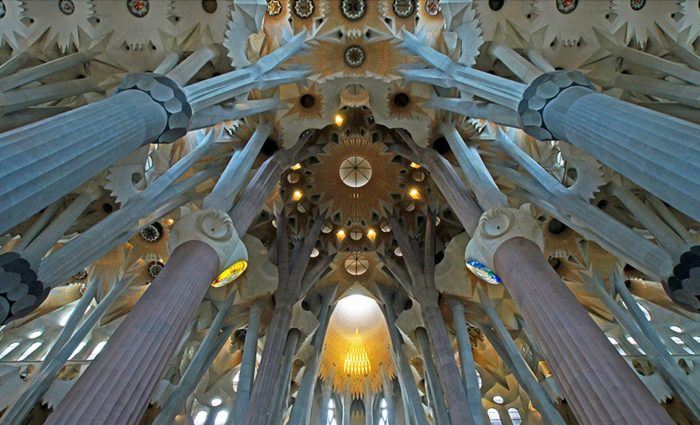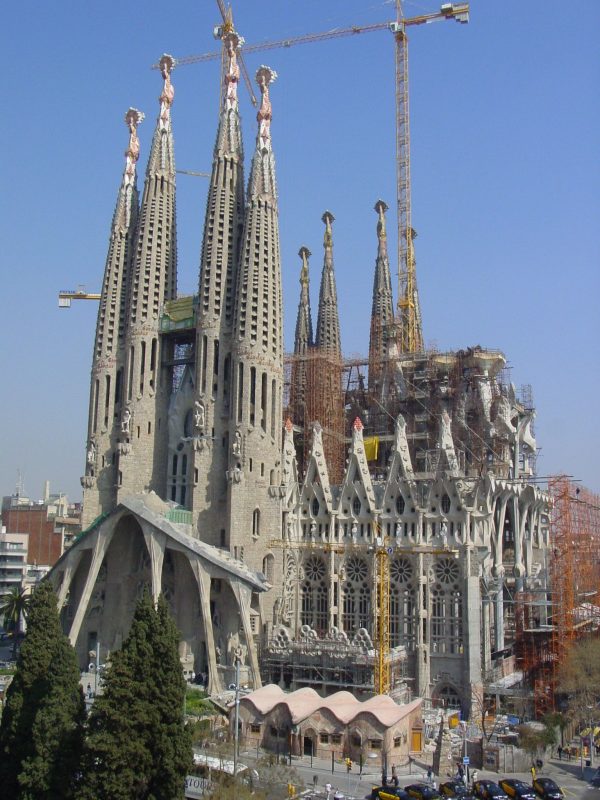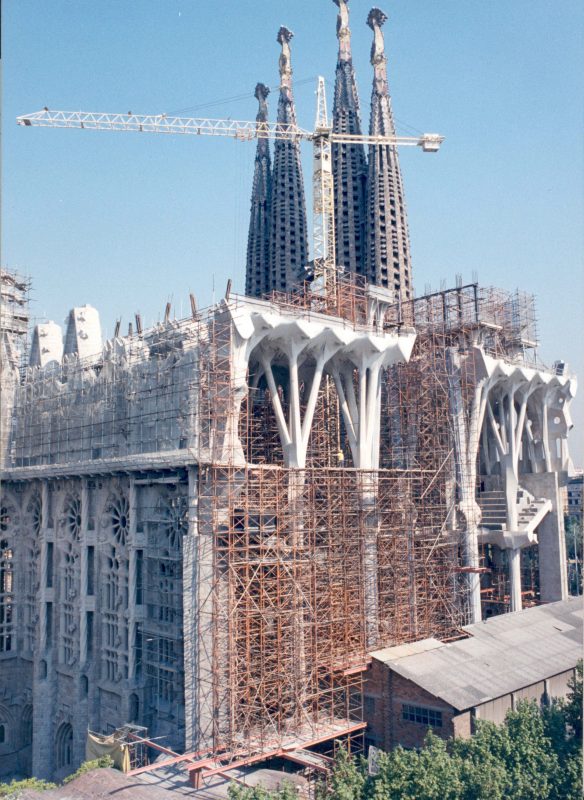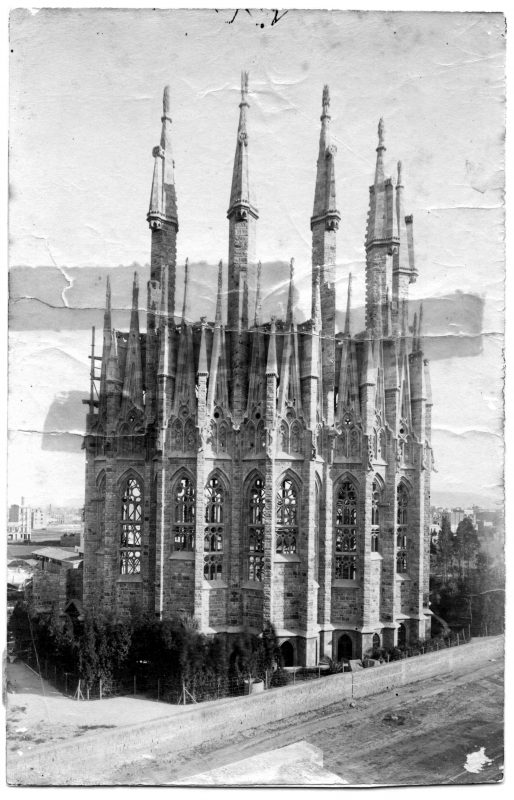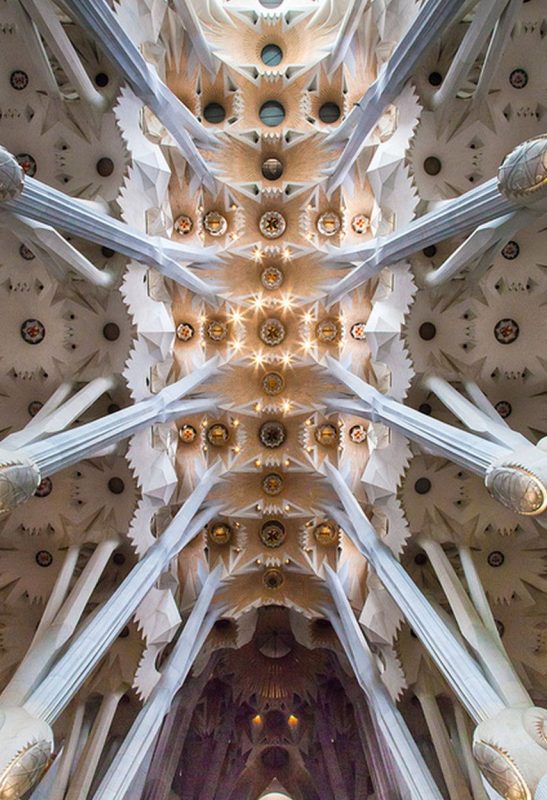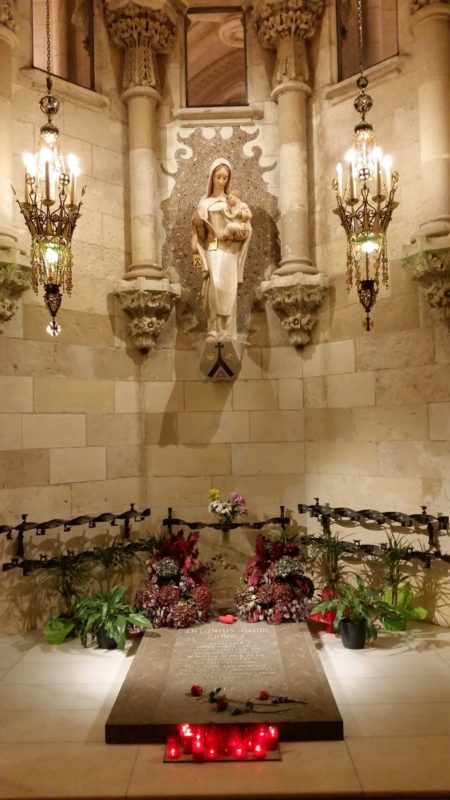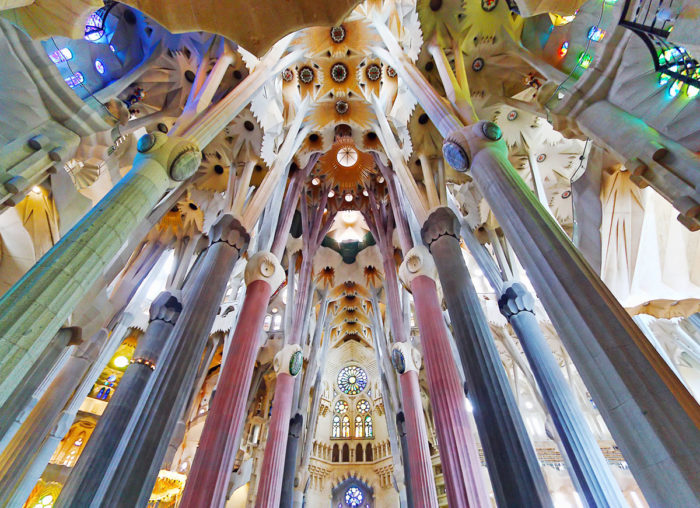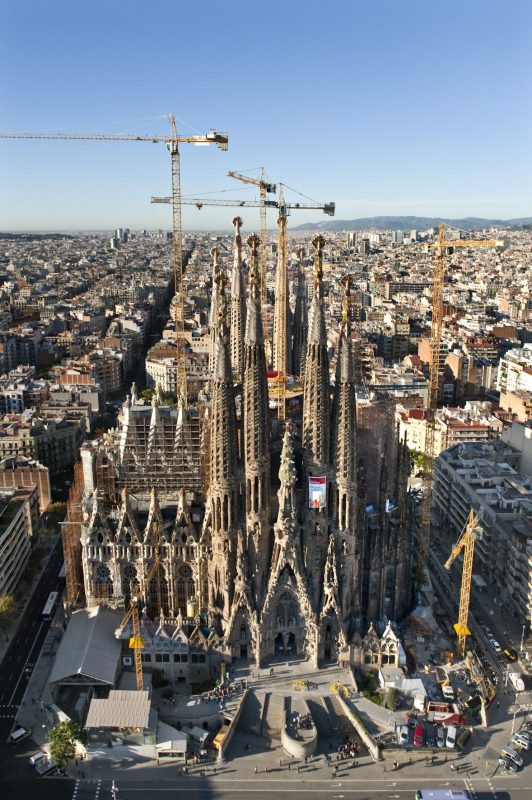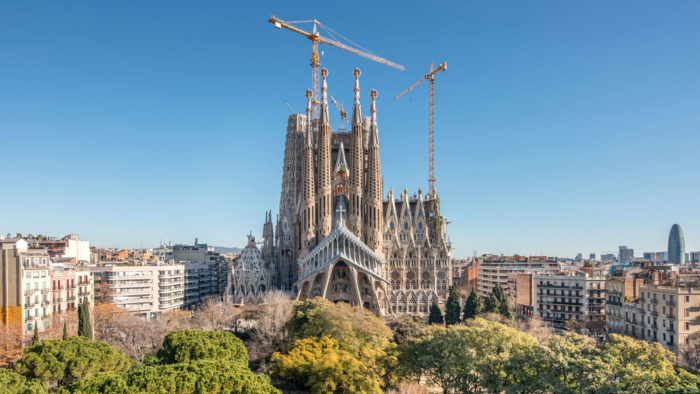Situated in the middle of Barcelona and thronged by millions, Sagrada Familia is a masterpiece by the brilliant mind of Antoni Gaudi. The Basílica I Temple Expiatori de la Sagrada Família is a Roman Catholic church, having a rich history of over 100 years.
Though the church has an ever-present crowd, it also functions as a place of worship. Pope Benedict XVI consecrated the church in 2010, and Sagrada Familia’s Chapel of Holy Sacrament and Penitence is reserved for prayer.
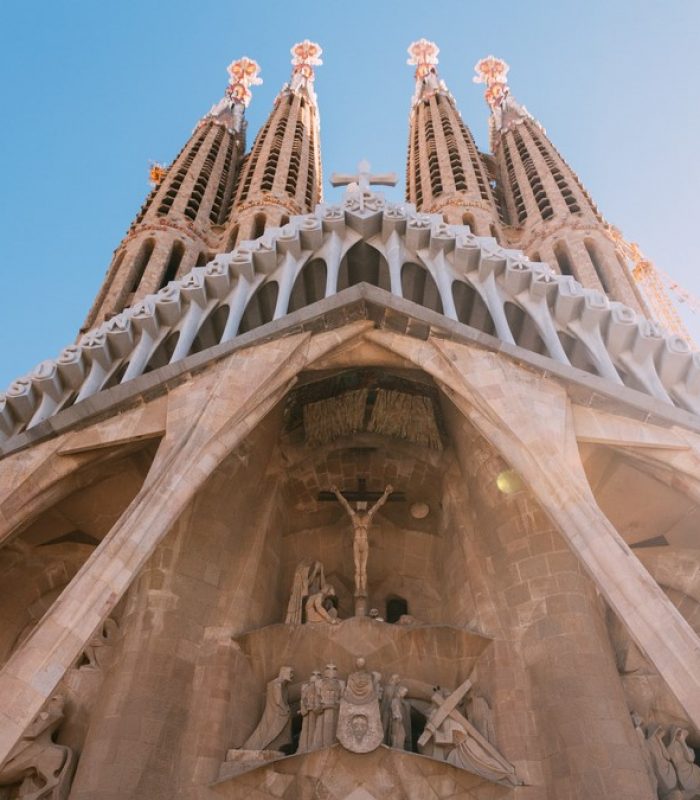
©Jonas Denil
Whether you visit the church as a part of an architectural tour or as a pilgrimage, it leaves all its visitors in various states of awe. With its slow -and steady – march towards completion, it’s hardly surprising that there are numerous unknown facts about this work of art and architecture.
History of the Sagrada Familia
Sagrada Familia may trace its roots back to approximately 1866 when a community devoted to Saint Joseph conceived of constructing a cathedral in his honor. In 1882, on the 19th of March, on the feast of San José, the first stone was put amid a plot of land that measured 12,000 square meters. Don Francisco de Paula del Villar y Lozano was the first architect hired for the job, but he left the project shortly after it began due to a disagreement.
Sagrada Familia Facts:
1. Setting the bar for Construction Time: What year will the Sagrada Familia be finished?
The church has taken longer to construct than one might imagine. Antoni Gaudi had gotten involved with the project when he was in his thirties, and from 1914, he focused exclusively on the church—at the death of Antoni Gaudi in 1926, not even a quarter of the work had been completed. Only in 2010 did the church pass the mid-way point.
The estimated year of completion is 2026, marking the 100th year of Gaudi’s death. (However, this projected timeline doesn’t consider that it would take till after 2030 to add the decorative details.) When completed in 2026, Sagrada Familia would have taken ten times longer than the Great pyramids, 123 years more than the Taj Mahal, and 50 years more than the Great Wall of China to be constructed.
Also Read: 10 Remarkable Art Nouveau Buildings Mastered by Gaudí
2. It all started with a bookseller…..and another architect
Josep Maria Bocabella, on his visit to the Vatican, wanted a church to be built in Spain, similar to the ones he had seen in Italy. Funded by private donations, construction started in 1882 under the architect Francisco Paula del Villar. If it continued under him, Sagrada Familia would have been a standard Gothic revival church.
However, he resigned a year later, and Antoni Gaudi took over. With only the apse crypt completed, Gaudi radically changed the plans, and the Sagrada Familia of today was born.
3. Pure and Geometric
Gaudi’s design for the church was done with the forethought that any architect who came after him could understand the drawings and details and continue the construction. He also made models of the Glory Façade for future architects to base their designs according to his vision.
Moreover, as he knew that the church wouldn’t be completed in his lifetime, he planned the construction in stages. This was done so that architects of different periods could add their style to the church’s design.
Also Read: 10 of the Most Iconic Buildings of Modern Architecture
4. Façades and Symbolism
Out of the three main façades, the east (in reality, North East, but has been simplified) façade, also known as the Nativity façade, is the only one to be constructed under Gaudi’s watchful eye. The Passion Façade (simplified West) is built and open to visitors, while the Glory façade (simplified south) is still under construction.
The Nativity façade, which celebrates the birth of Christ, has three portals – Hope, Mercy, and Faith. The faces on the Portal of Mercy were done using the death masks of the deceased people of Barcelona and molds of the workers’ faces. This was Gaudi’s way of making the church a part of the people.
The Passion façade is dedicated to the death of Christ and is designed to be plain and simple. With rigid shapes, harsh lines, and composed of bare stone, the facade is representative of a skeleton. This façade has fewer sculptures in comparison to the Nativity façades. Scenes from The Last Supper, Judas’ kiss, the crucifixion, and the resurrection are depicted. It has six large and inclined columns to resemble the Sequoia trunks. Above this are 18 smaller white columns representing bones.
The Glory façade, after construction, will be the tallest and principal facade of Sagrada Familia. It offers access to the nave and will be decorated with idols, false gods, and demons.
5. 12 Towers with multiple pinnacles
Each façade consists of 4 towers (a total of 12 towers) representing the Apostles of Jesus Christ. Next to these towers, close to the middle of the church, are six taller towers, four dedicated to the Evangelists. These four are of the same height and are designed similarly. These four towers surround one tall tower in the center, representing Jesus. This tower will bring the structure’s elevation to 560 feet and make it the tallest church in Europe.
The 6th tower is at the very north and shorter than the ones representing the Evangelists. However, it is more sturdy and depicts the Virgin Mary. The tower of Jesus will be topped with a cross, while the other buildings will have different symbols. The towers of the three main façades will have episcopal symbols. Apart from the 18 towers, the church has other smaller pinnacles. These have other religious symbols on top of them, like sheaves of wheat, a bunch of grapes, etc., representing the Eucharist.
6. Nature and God’s Work
Gaudi is known for getting inspired by Nature, his buildings having numerous nods to nature’s bounty. One of the first things Gaudi did after taking over the Sagrada Familia’s design was to eliminate any straight lines and angles, as they didn’t naturally appear.
The interiors of Sagrada Familia are designed to represent Nature, with columns as trees and various creatures hidden throughout the basilica. Moreover, he believed that the work of humans should not exceed the work of God and designed the central tower to be a meter shorter than the Montjuic hill of Barcelona.
7. Magic Square on the Passion Façade
As though from a Dan Brown book, the Passion façade has a 4×4 Magic Square that has puzzled everyone. Some had found that the magic constant (the sum of the numbers in a row/column) was 33 – the age of Christ when he was crucified. Others explain the 33 as a part of Gaudi’s Freemanson history. Gaudi seems to have taken the secret of the magic square to his tomb, leaving everyone to theorize and devise conspiracies.
8. Not everyone is a fan
Criticisms from writer George Orwell – who called the church “one of the most hideous buildings in the world” – and British historian Gerald Brenan “Not even in the European architecture of the period can one discover anything so vulgar or pretentious” should come as no surprise. With bold style, Sagrada Familia is bound to ruffle a few feathers.
Moreover, in 1936, a bunch of anarchists broke into the church and set alight all the models and papers made by Gaudi. Architects like Francesc Quintana, Isidre Puig, and Luis Bonet had to combine the remaining design materials and imagine Gaudi’s vision of Sagrada Familia. In 2008, over 100 members of Barcelona’s art and architecture community signed a manifesto stating all the project’s parts that were straying from Gaudi’s style.
9. Sagrada Familia’s crypt: Who is buried in Sagrada Familia?
Only two people are buried there – its architect, Antoni Gaudi, and the man who started it all, Bocobella.
10. Doubles as a Lighthouse
The mosaic on the roof of Sagrada Familia is designed to reflect the moonlight. It turns into a kind of lighthouse to guide seamen back home. Moreover, the reflection of the roof in the sun is so that the structure is visible from all points of the city.
12. Donations, Alms, and Tourists for construction
The construction of Sagrada Familia is entirely dependent on private funding. It received the name Expiatory Temple because the government or the church did not support the building. Approximately €25 million a year’s budget is entirely obtained through entrance tickets to the church and private donations.
You could also visit this beautiful UNESCO Heritage Site and proudly call yourself a contributor to the construction of Sagrada Familia.
Why is the Sagrada Família not finished?
Gaudi’s tragic death was one of the first to interrupt the church’s construction. The building was suspended ten years later during the Spanish Civil War. Destroying the basilica’s models and designs by vandals slowed down the building process.
The building of Sagrada Familia gained steam throughout the years, only to be momentarily delayed again in March 2020 owing to the Covid-19 pandemic. However, in July 2020, the basilica reopened to its most important employees, and since then, progress towards finishing Sagrada Familia has been encouraging.
There have been five generations of people who have seen the basilica take shape. Completing this one-of-a-kind extravaganza in 2026, on the centennial of Gaudi’s death, is a poetic coincidence.
